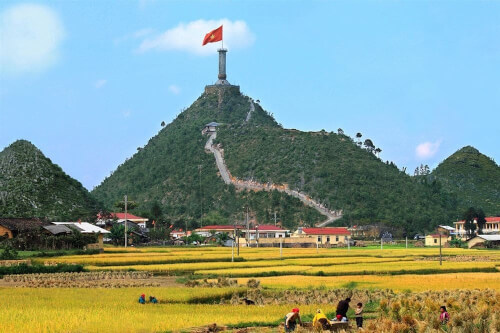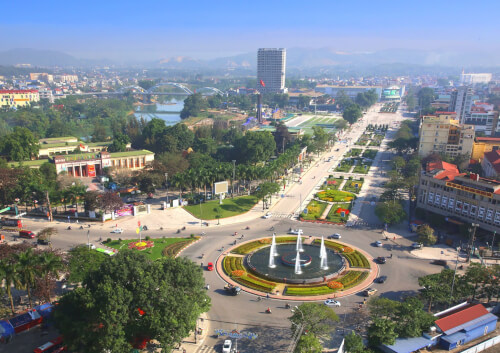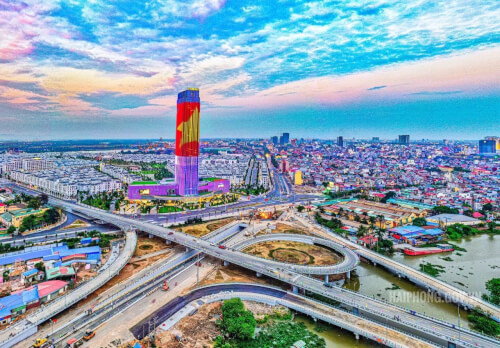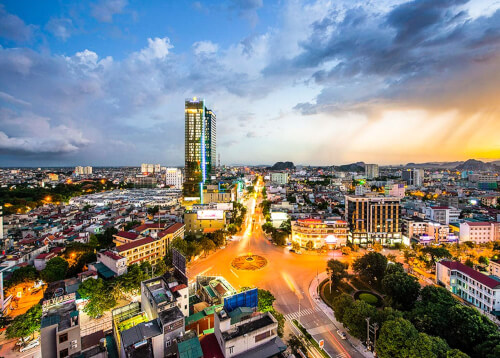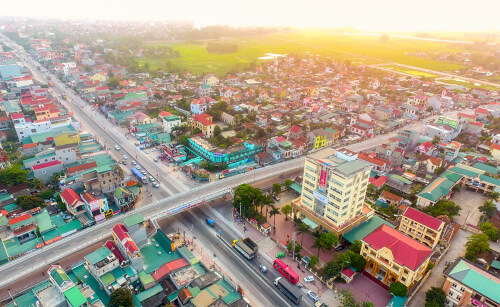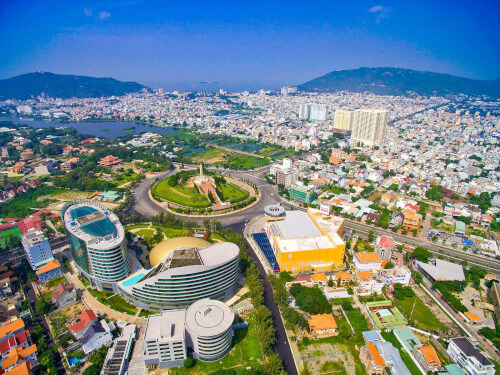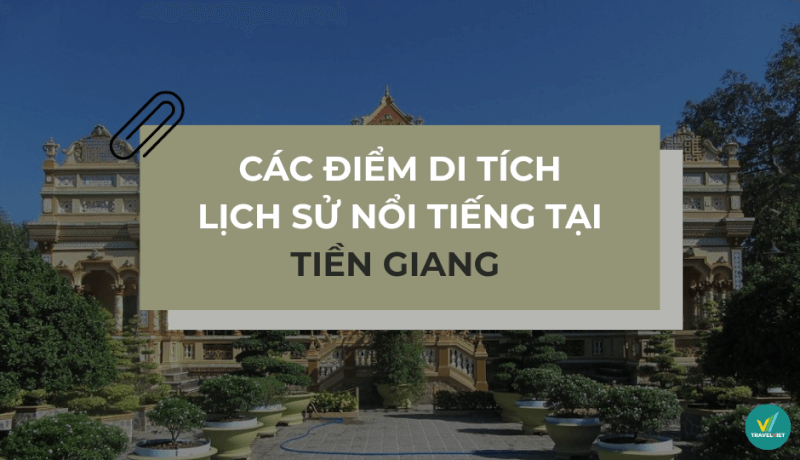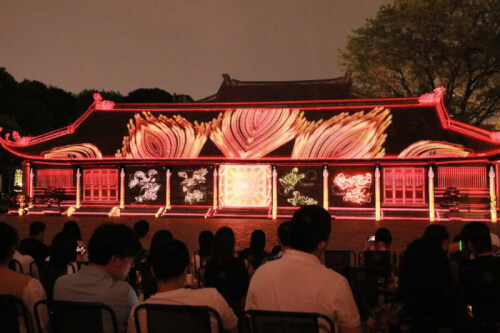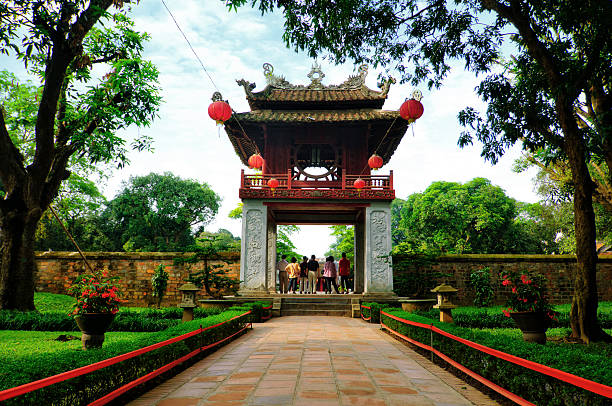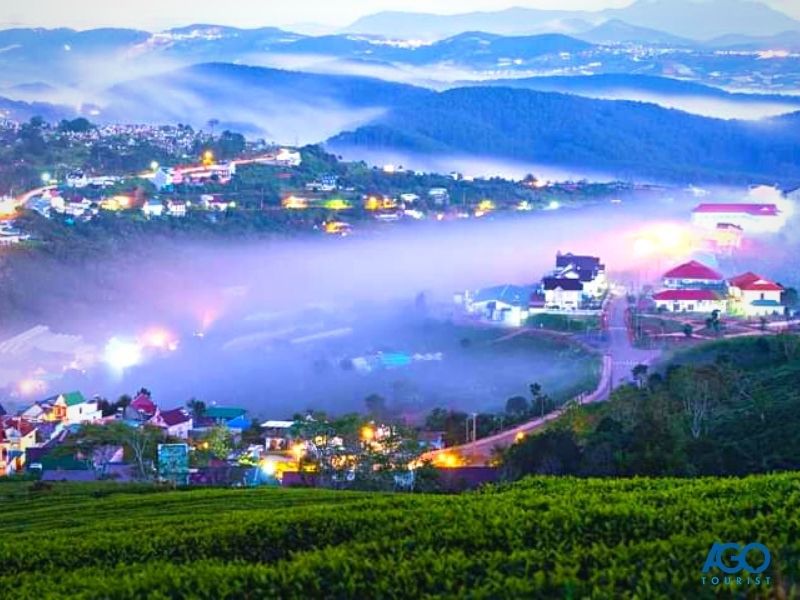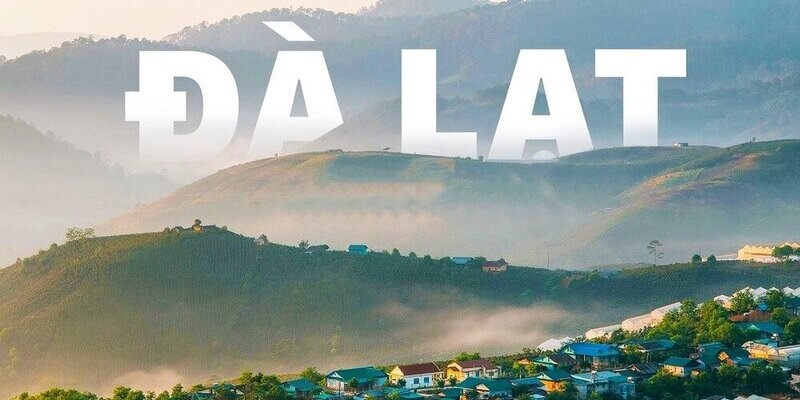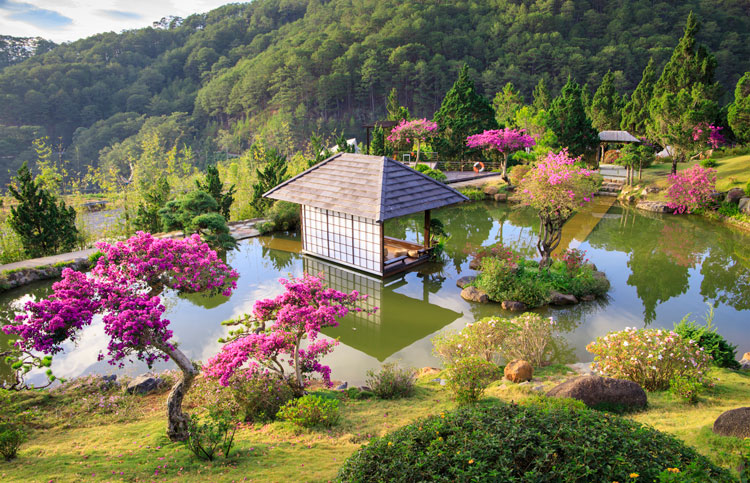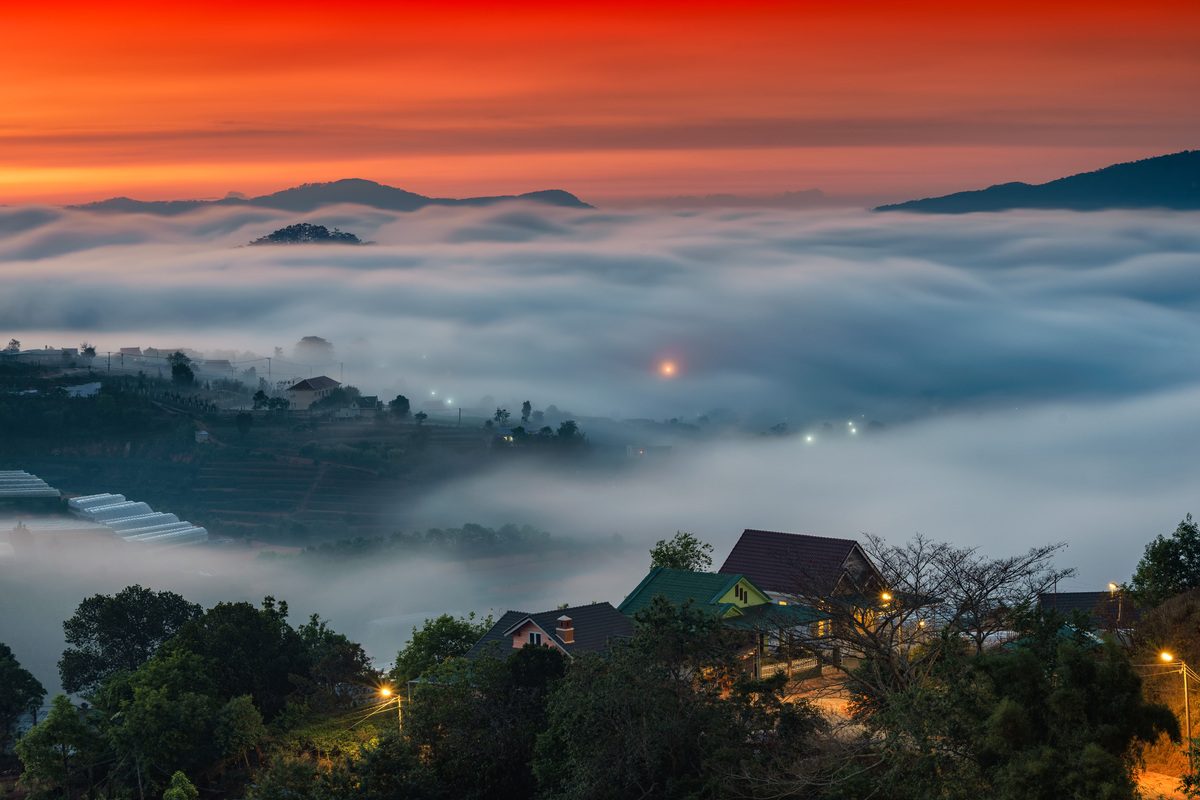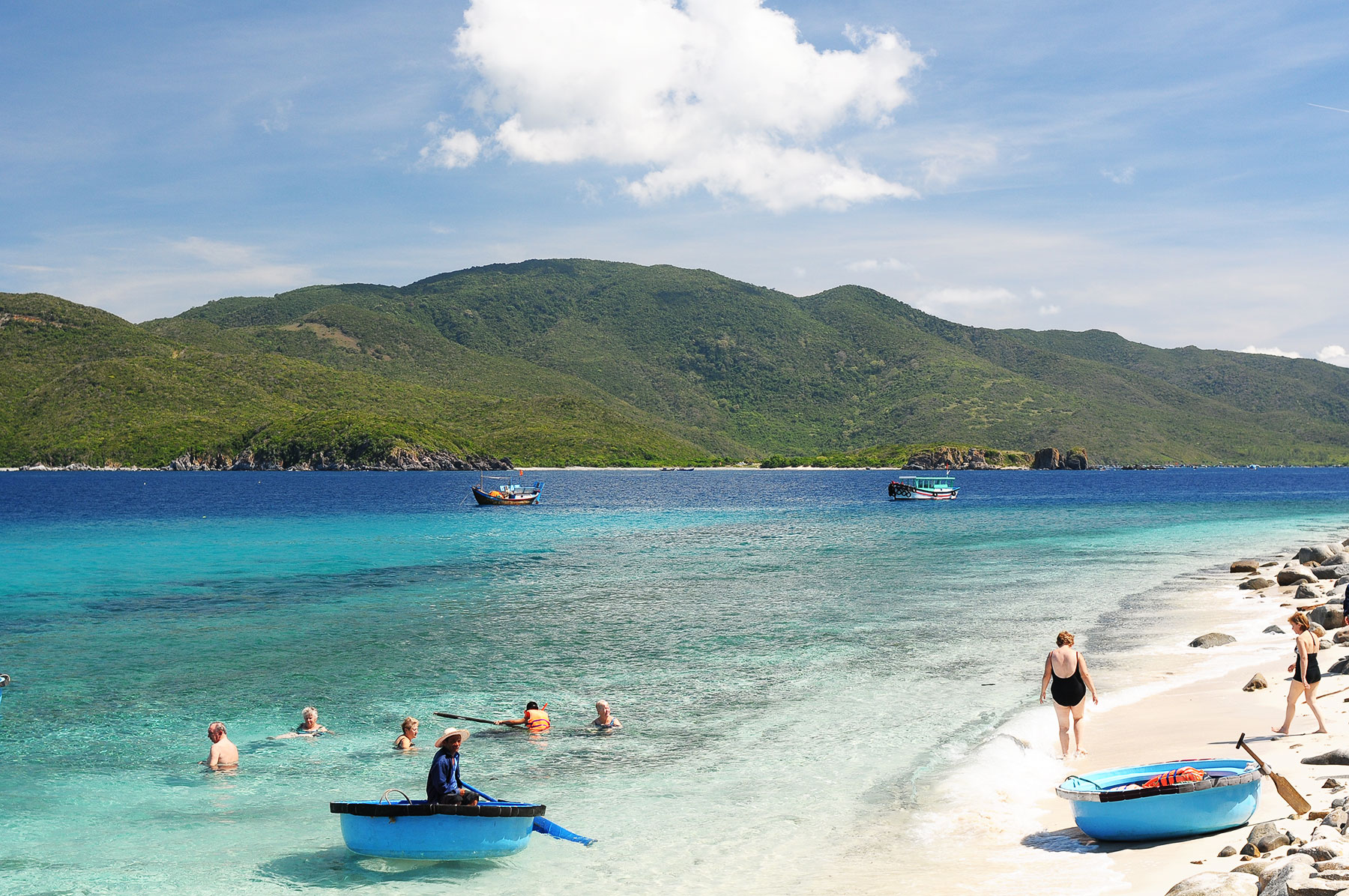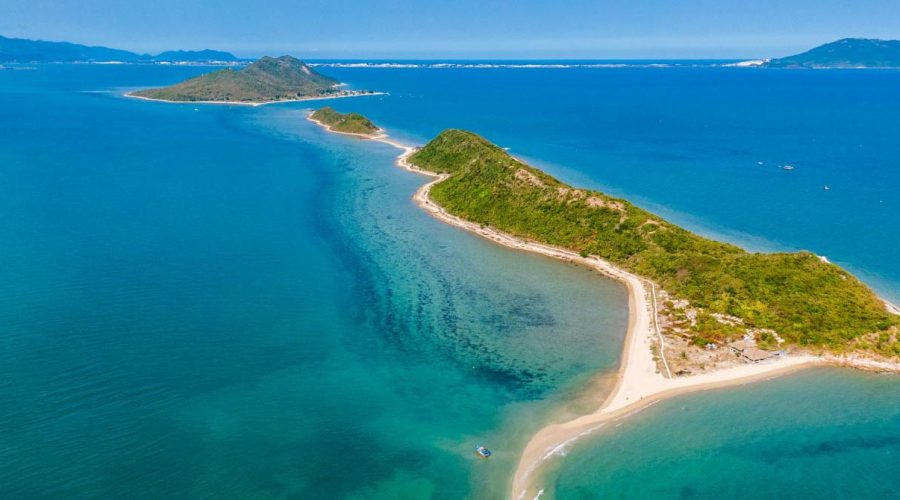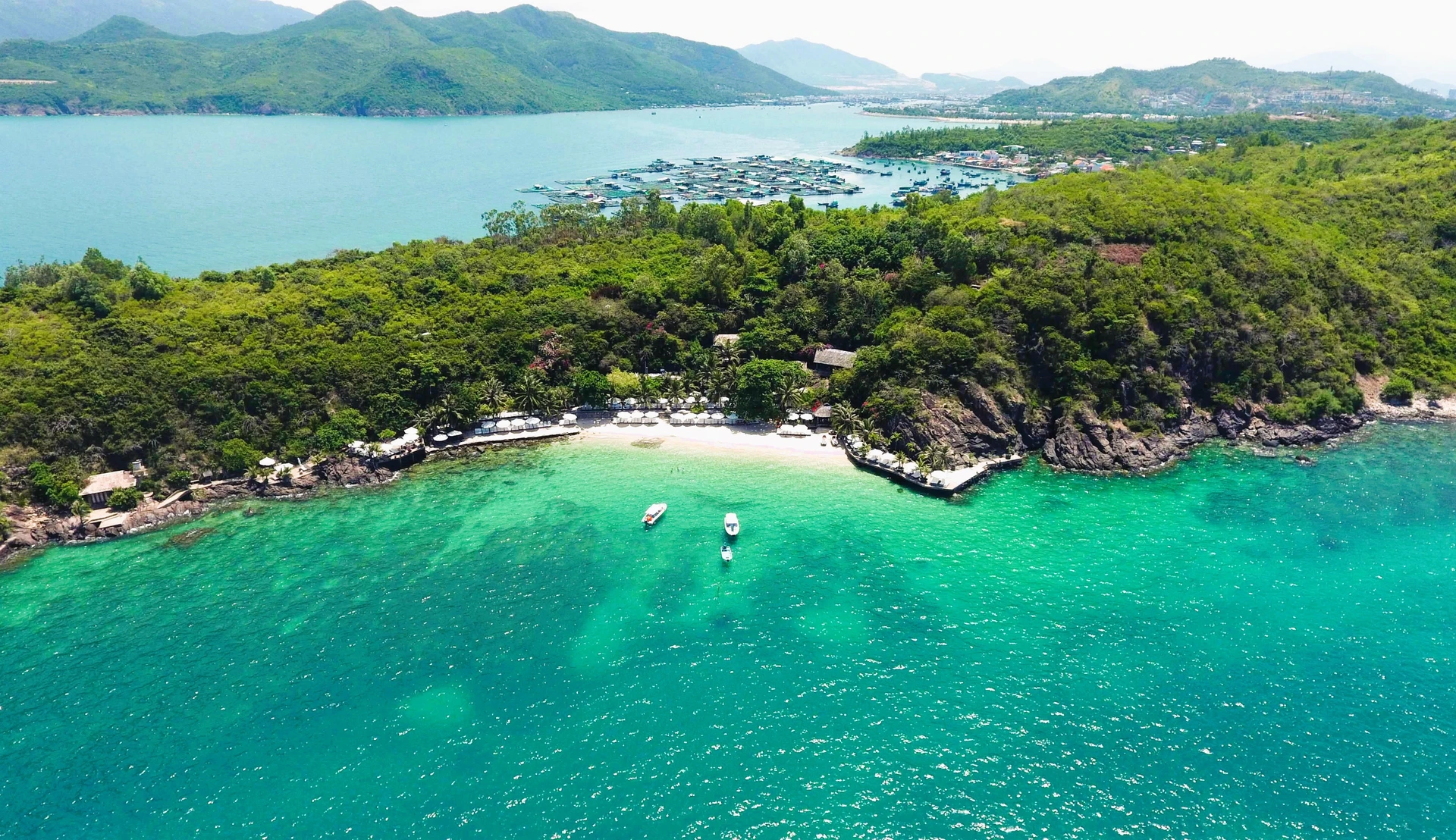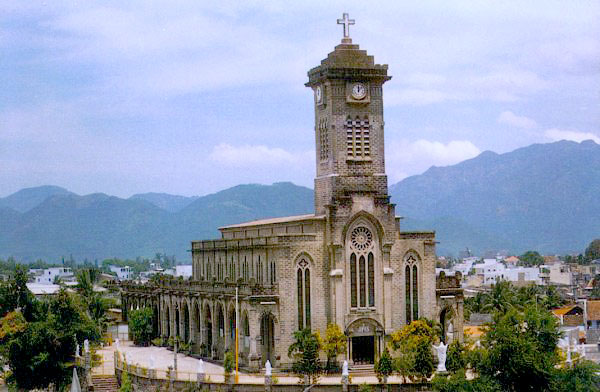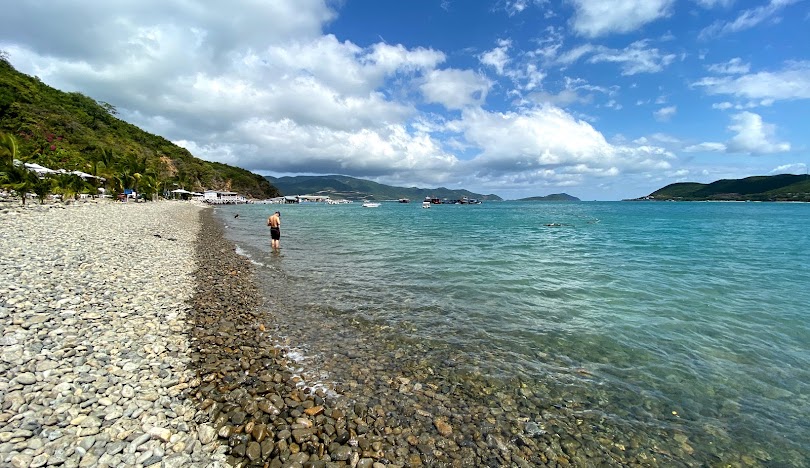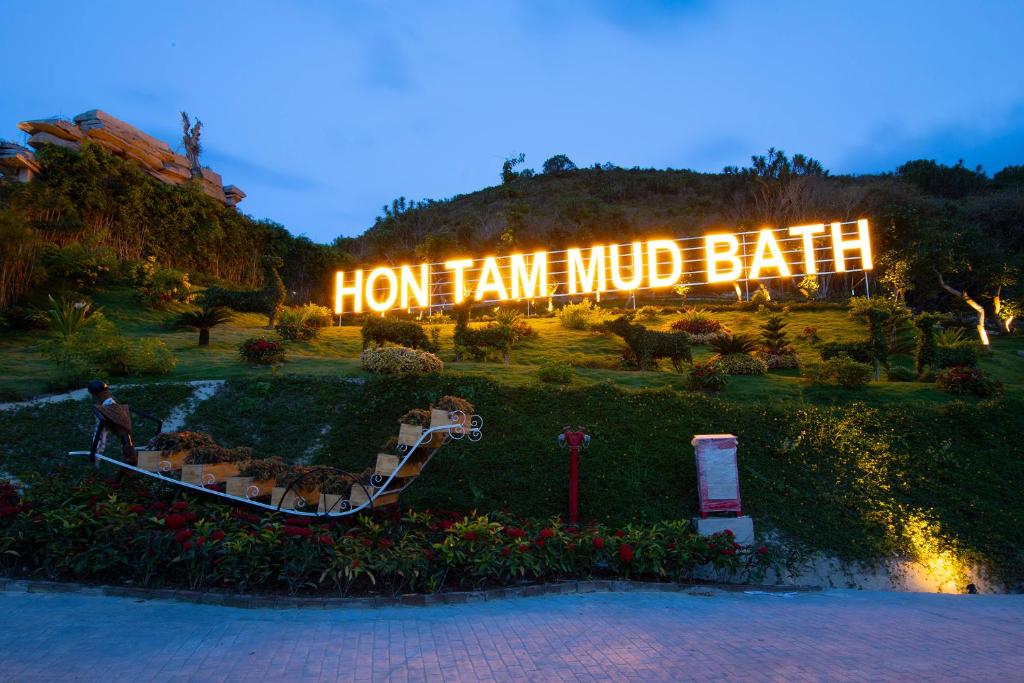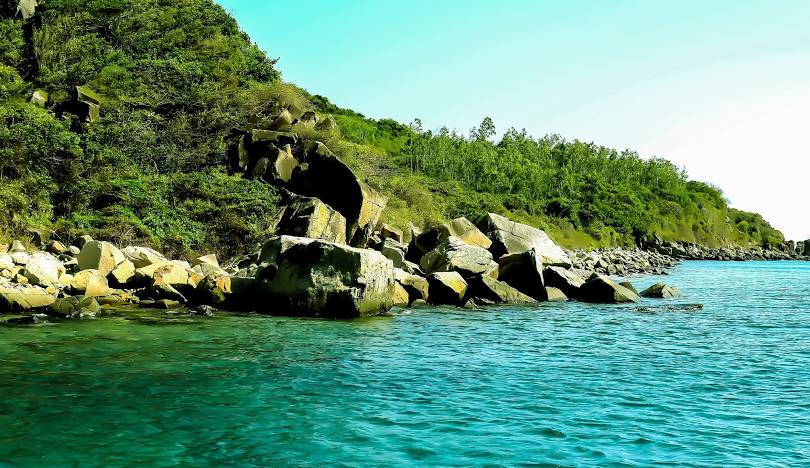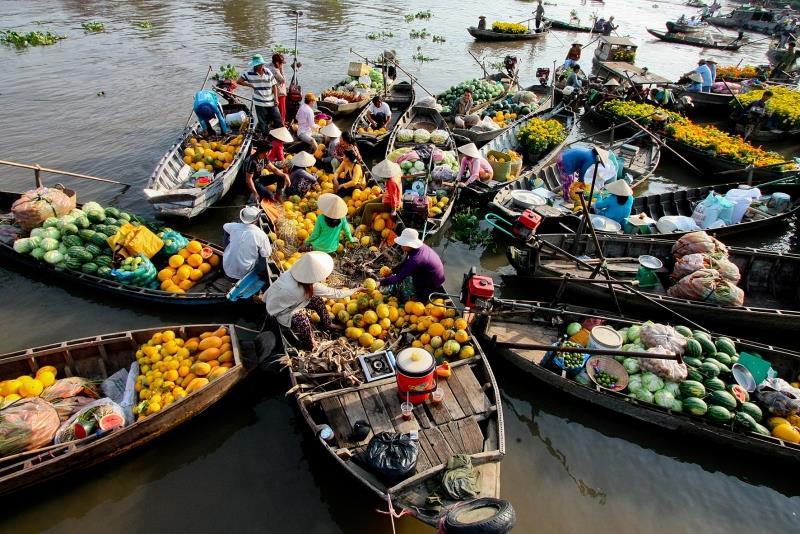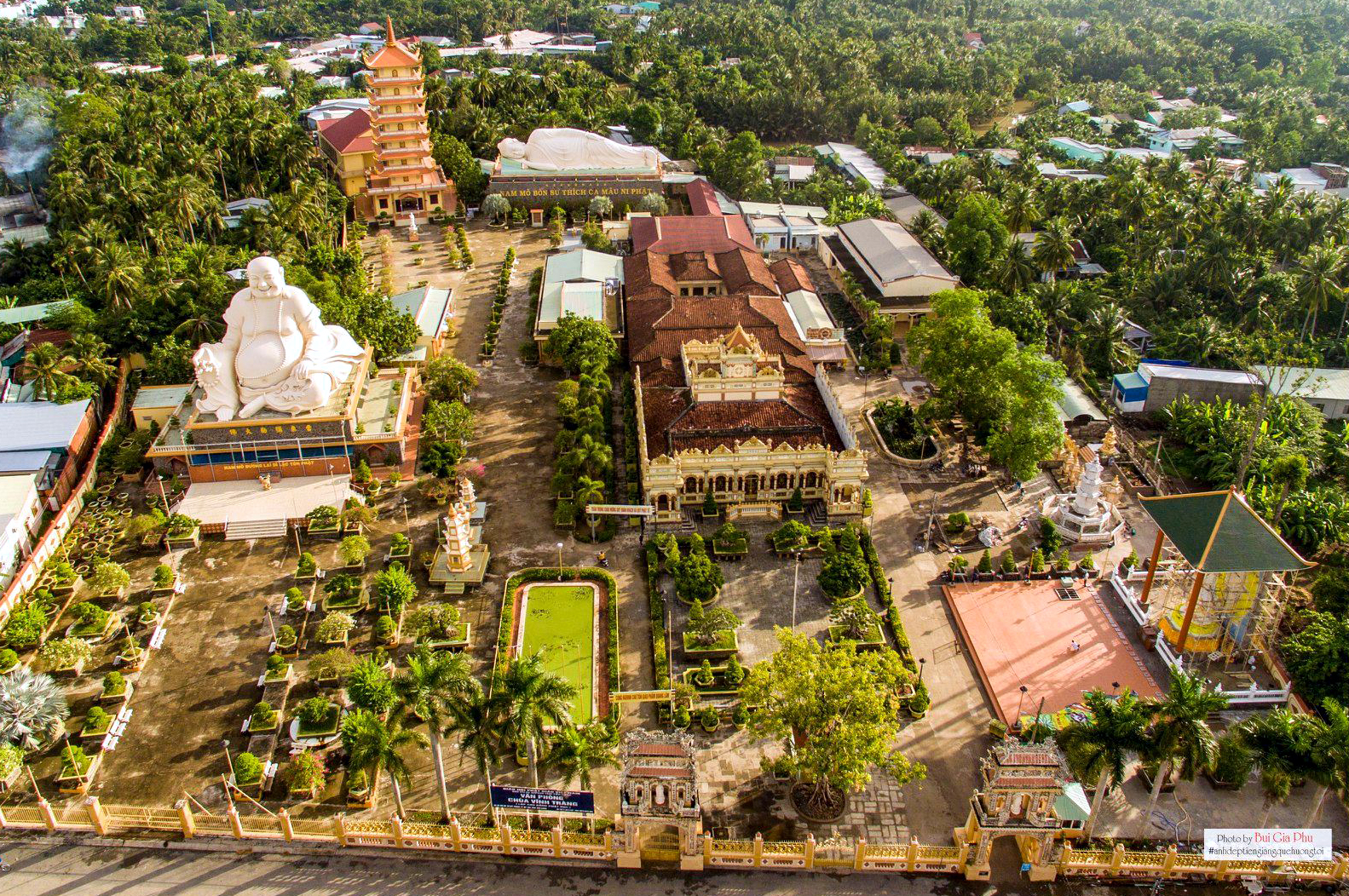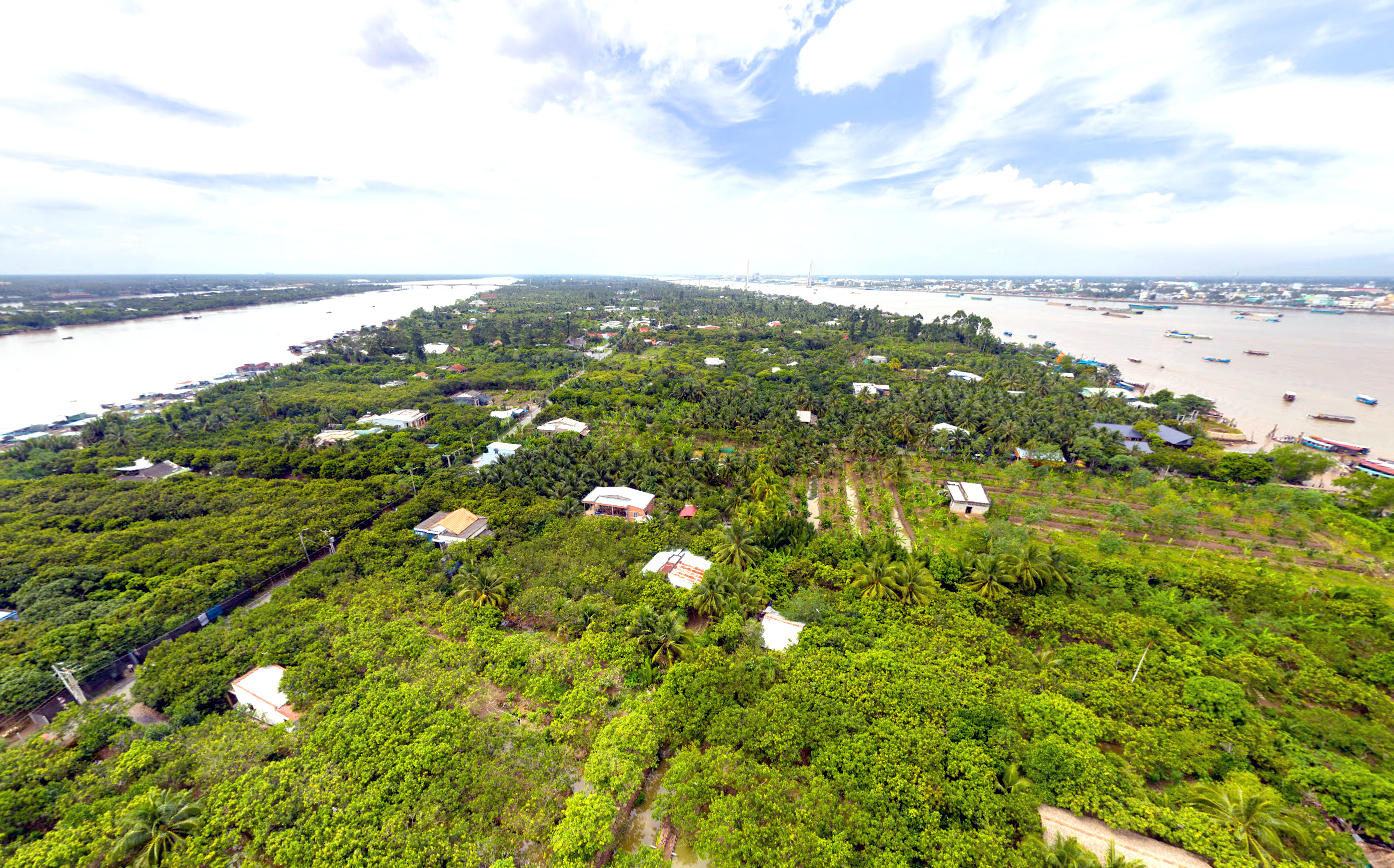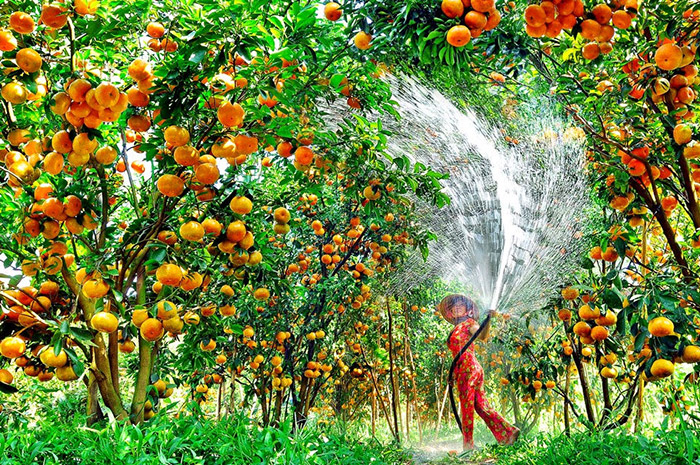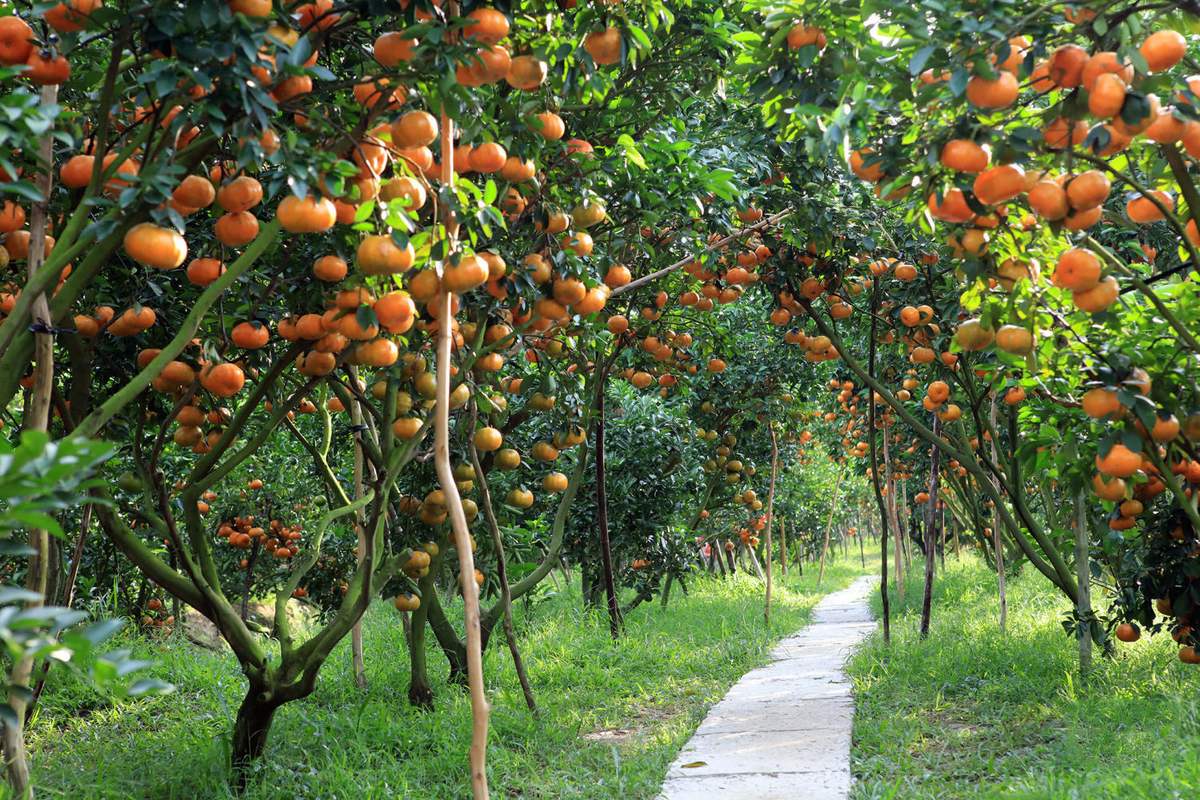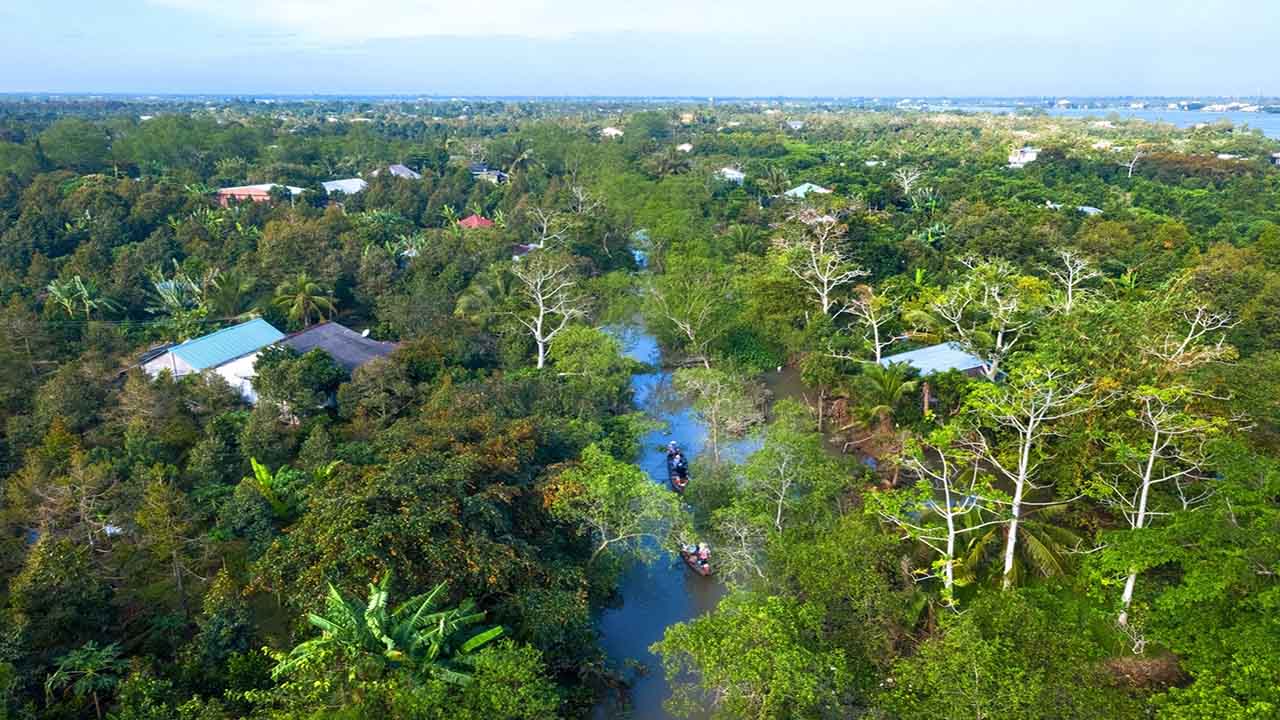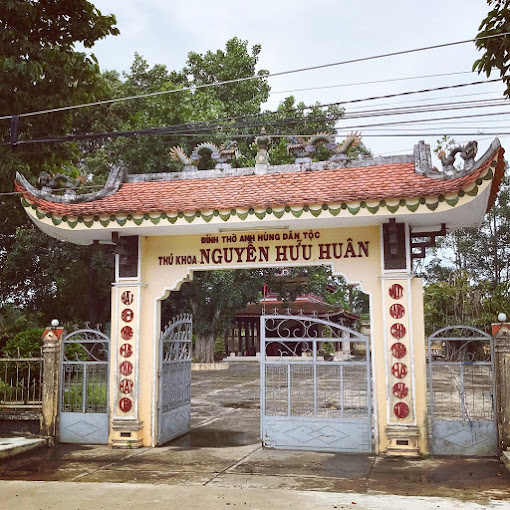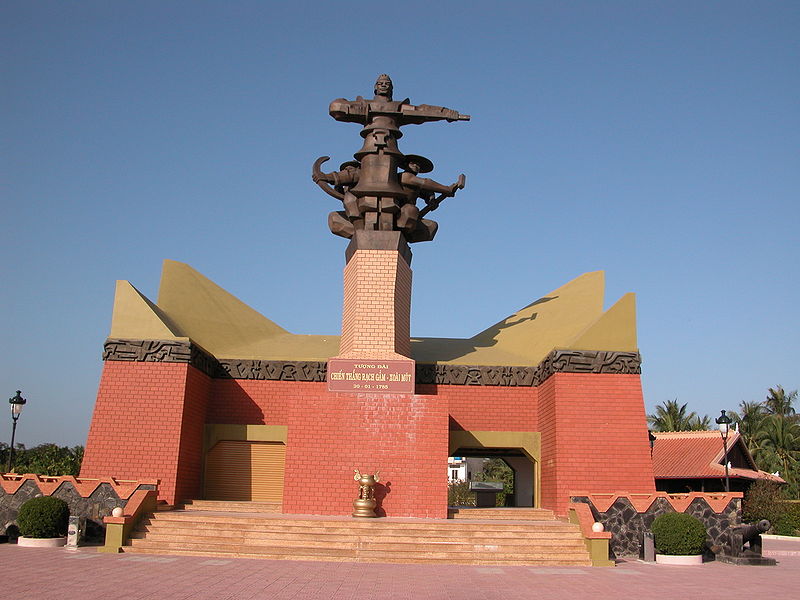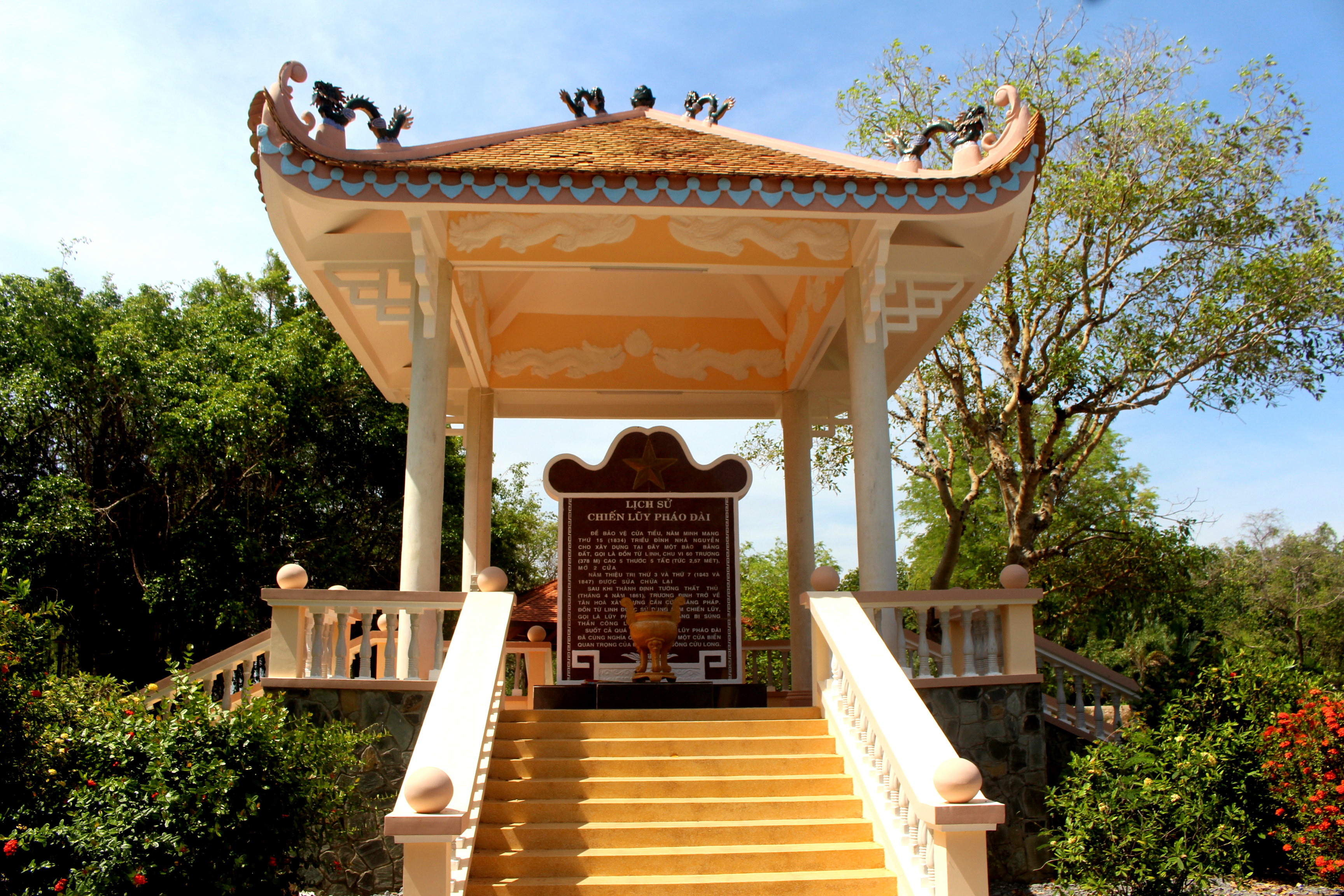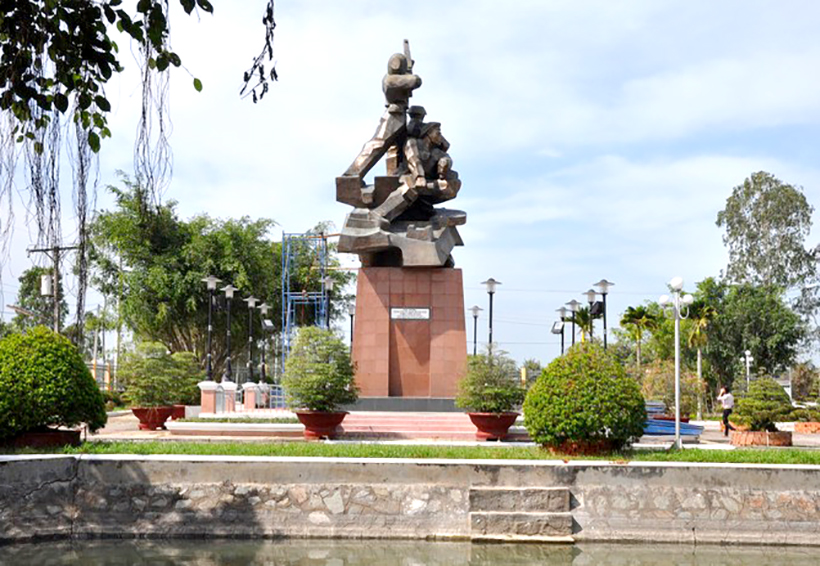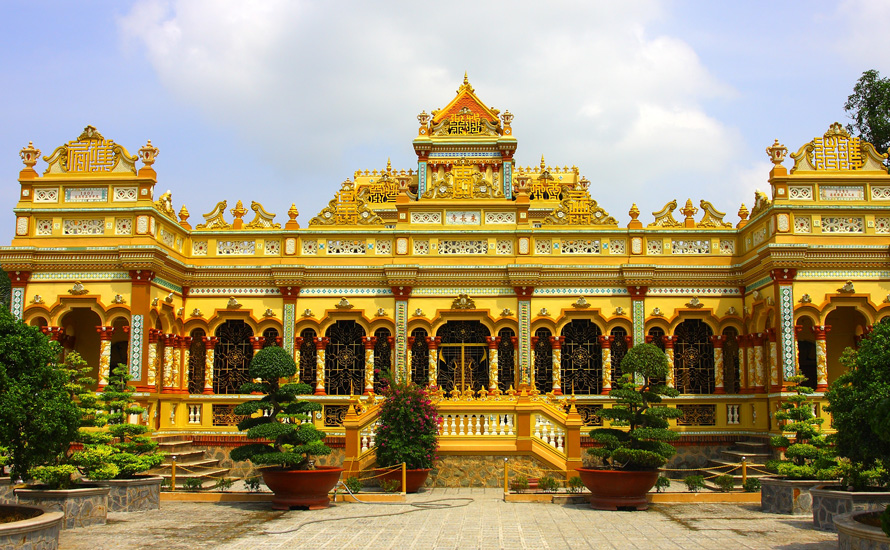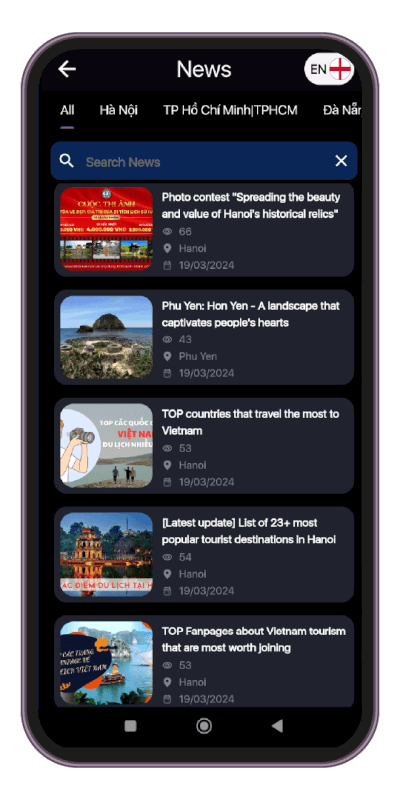Tien Giang - a coastal province in the Mekong Delta, is an ideal destination for those who love the rustic beauty of the West. Join 63Stravel to explore outstanding historical sites in Tien Giang, which preserve many unique historical and cultural values.
If you want to explore historical sites in Tien Giang, don't miss this article. Although the area is small, Tien Giang contains many natural beauty and unique cultural values of the South. Find out now with 63Stravel!
Visit 14 historical sites in Tien Giang that are famous and full of value
According to statistics, Tien Giang currently has 185 ranked historical and cultural relics, including 3 special national relics and 17 national relics associated with the names of national heroes and famous people. important historical events. These relics are not only preserved but also exploited and developed in tourism combined with education of revolutionary traditions, contributing to preserving local cultural values.
Ap Bac Victory Relic Area
Ap Bac is a famous place with a resounding victory over more than 2,000 enemy soldiers, not only famous domestically but also attracting international attention. Today, the Ap Bac Relic Area, spanning nearly 3 hectares, is a place that preserves special cultural and historical values, attracting tourists.
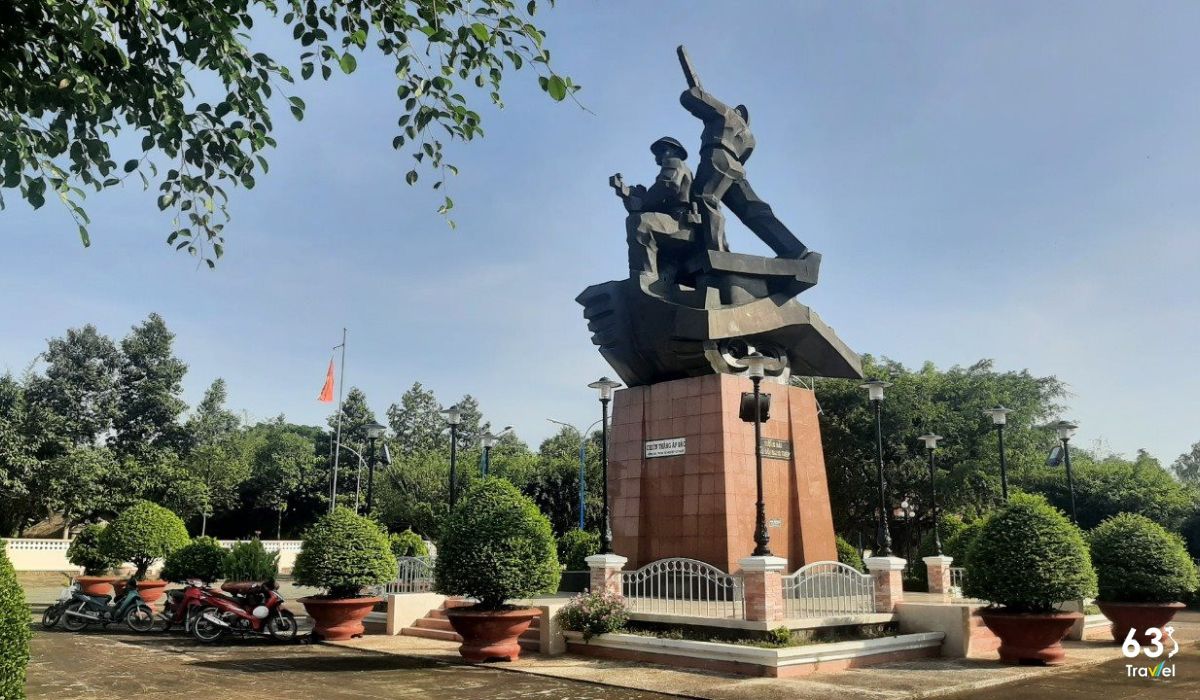
Ap Bac relic site - a place marking glorious historical achievements
The monument consists of three main areas: the three soldiers' monument area, the area recreating the anti-American period with people's houses and battle bunkers, and the 1,000 m² museum area displaying artifacts and images of the battle. The field in front still retains plane crash sites, enemy tanks and large bomb craters - living historical evidence. In 1993, this place was ranked as a National Monument.
Thu Khoa Huan's tomb and temple
The Temple of Valedictorian Nguyen Huu Huan, located about 3.5 km east of National Highway 1A, is a spacious traditional architectural work with an area of 0.5 hectares. Valedictorian Nguyen Huu Huan, born in 1830, was a talented patriotic scholar who passed the valedictorian exam under the Tu Duc dynasty in 1852.
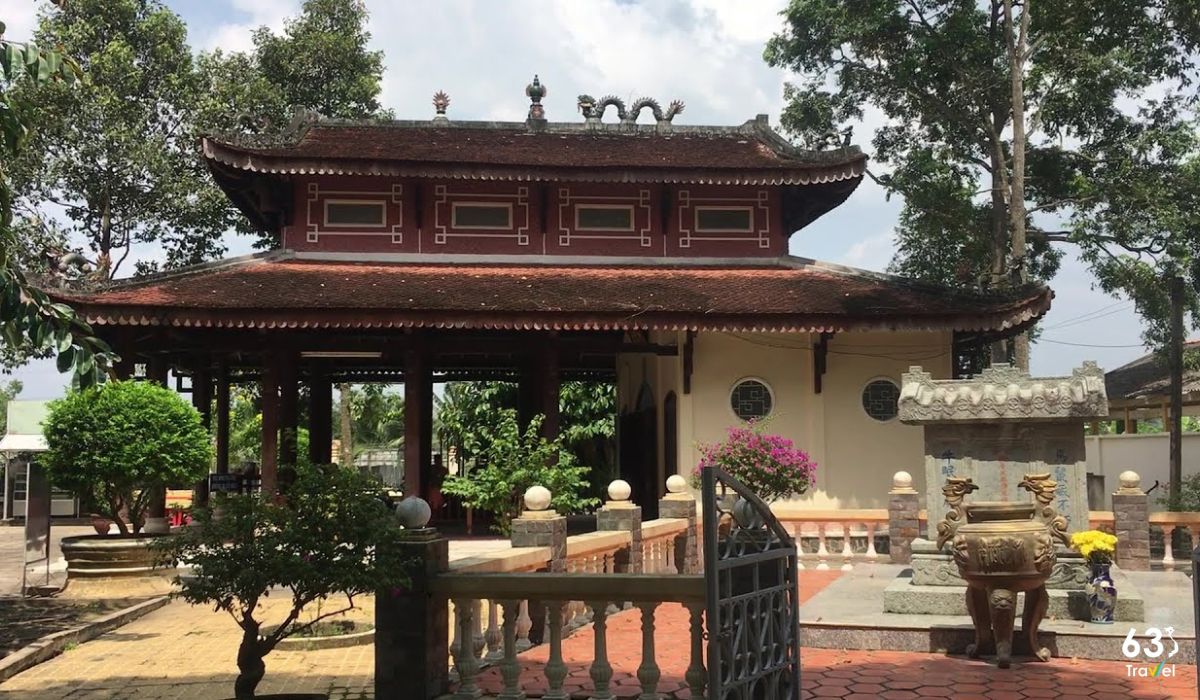
Temple to worship Valedictorian Nguyen Huu Huan
When the French colonialists invaded, he renounced his position and organized a resistance war, but was arrested and beheaded in 1875. His tomb was initially covered with dirt, restored in 1927 with green stone, with a unique architecture bearing "elephant uniform" shape. The temple and grave site were ranked as a National Monument in 1987, becoming a place of reverence, attracting people and tourists to commemorate the national hero.
Air Conditioning Pavilion
Dinh Hoa Communal House, originally named Giang Tram Dieu Hoa Thon, was established under the Nguyen Dynasty as a stopping point for mandarins when on local business trips. Here, they can rest overnight after long journeys. Besides, the communal house is also used to worship Thanh Hoang Bon Canh, the protector god of the villagers.
According to historical documents, the name "Dieu Hoa" appeared in the 18th century, when three small villages Hoa My, Hoa Hao and Hoa Thoi merged into an administrative unit of Kien Hung district, Tran Dinh palace (later This is Dinh Tuong province). After establishing the village, people built communal houses to worship the Thanh Hoang gods and those who had meritorious contributions in reclaiming and establishing the village.
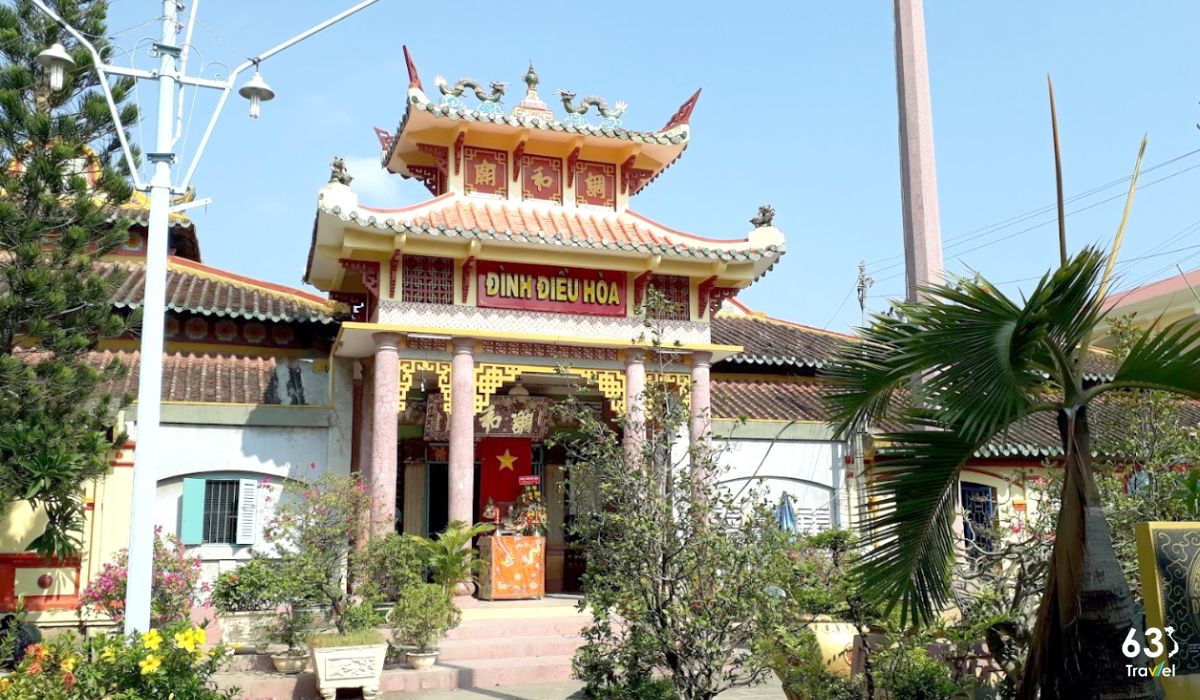
National relic of Dieu Hoa Communal House
Currently, Dieu Hoa Communal House is located on Trinh Hoai Duc Street, Ward 2, My Tho City, Tien Giang Province. Here, three Thanh Hoang gods and one blessed god are worshiped, along with those who contributed to founding the village such as Tien Hien Cam Dia Nguyen Van Kien, Tien Hien pioneer Nguyen Van Truoc and Truong Van D. In addition to its role as Giang Tram, the communal house is also a place to organize Ky Yen ceremonies, run by local dignitaries.
Architecturally, Dieu Hoa communal house bears the mark of national culture through its large scale and intricately carved details. This is not only a work of art but also a place to preserve many tangible and intangible cultural heritages of Tien Giang. Inside the communal house, people still preserve many precious artifacts such as a collection of urns, bronze tops, altar weapons and Chinese ceramic artifacts from the 18th - 19th centuries. In particular, traditional worship rituals are still maintained, creating a sacred and culturally rich space.
After more than 200 years of history and many restorations, Dieu Hoa communal house still retains its majesty and spaciousness. Every year, on February 16-18 and October 16-18 of the lunar calendar, the communal house organizes the Ky Yen festival, attracting a large number of people and tourists to participate. In 2009, Dieu Hoa communal house was recognized as a national monument by the Ministry of Culture, Sports and Tourism, affirming the special historical and cultural value of this work.
Tomb of Tu Kiet
Tu Kiet's mausoleum worships four national heroes who are respected by Cai Lay people and called "The Four Ong" or "The Four Kiet". Among them, a typical example is Mr. Tran Cong Than, surnamed Phuong, from Vong hamlet, My Trang village, now belonging to My Phu hamlet, Long Khanh commune, Cai Lay district. The name "Tu Kiet" not only evokes closeness but also shows respect for the heroes, the "Dang Cuu soldiers" who bravely resisted the invasion of the French colonialists right from the beginning. The first day they set foot on the land of the South.
According to historical records recorded at Cai Lay Traditional House, all four heroes were plantation residents, belonging to a paramilitary organization founded by Nguyen Tri Phuong. Their model of "pure people, active soldiers" not only aims to build the economy but also prepares to protect the country. After the French occupied the three eastern provinces, Tu Kiet returned to support Thien Protector Duong and Military Officer Kieu in the fight against the enemy at Thap Muoi. However, due to weak forces and the difference in equipment, the resistance efforts of Thien Ho Duong and Doc Quan Kieu ultimately failed.
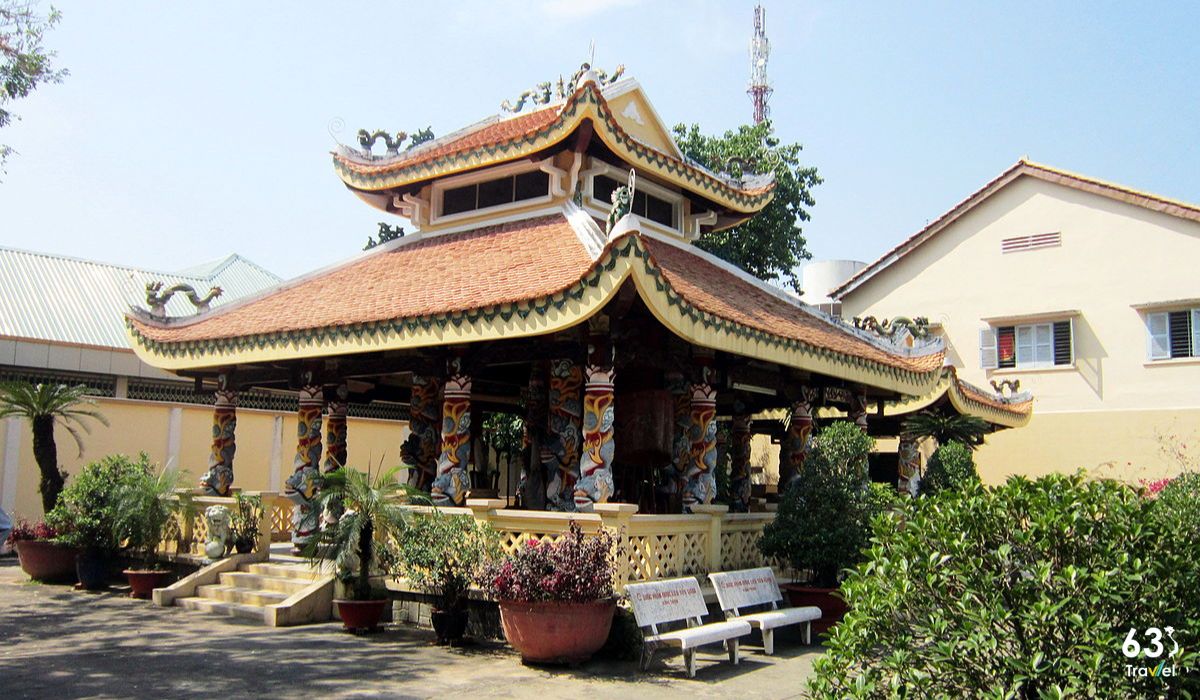
Tomb of Tu Kiet is recognized as a provincial cultural and historical relic
In 1868, Bon Ong returned to Cai Lay, recruited more people and established a base to continue the resistance against the French army. Thanks to their extensive combat experience and excellent ability in guerrilla tactics, despite their rudimentary weapons, they held off the enemy for nearly three years, causing much damage to the French army. Tu Kiet's brave army grew stronger and stronger, continuously achieving resounding victories in My Qui, Cai Be, and Thuoc Nhieu.
To commemorate and pay tribute to the four heroes, people built the Tu Kiet temple, about 300 meters from the Chinese Ong Pagoda and the graves of their four heads, becoming a place for people to regularly burn incense. . After the Geneva Agreement, the graves of the Four Grandfathers were restored into four separate tombs surrounded by fences, creating the solemn appearance they have today.
Every year, on the 25th day of the twelfth lunar month, Cai Lay people hold a solemn sacrifice ceremony to honor the contributions of Tu Kiet, turning this event into a unique two-day folk culture festival. The festival includes worship rituals such as the Thanh Hoang ceremony and has opera performances for the public. People from Cai Lay, Cai Be, My Tho, and the whole city. Ho Chi Minh flocked to attend, creating a vibrant atmosphere. To meet the admiration of the people, in 1997, the local government restored Tu Kiet mausoleum, bringing it to its present spacious and majestic appearance.
Vinh Trang Pagoda
Vinh Trang Pagoda in Tien Giang is not only attractive because of its large scale but also because of its unique architecture, a harmonious combination of Eastern and Western culture, blended with traditional Vietnamese art. As one of the largest pagodas in the Southwest region, the pagoda is about 3km from My Tho city center, easy to get to.
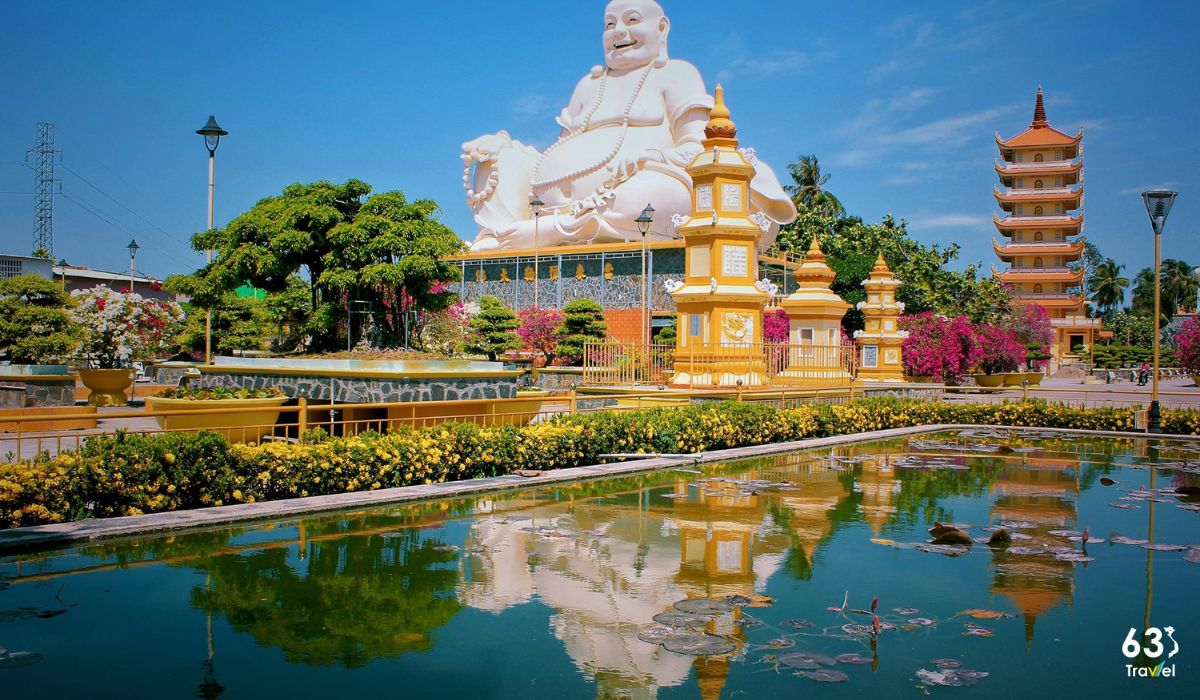
Vinh Trang Pagoda - Visit the largest ancient pagoda in Tien Giang
The pagoda was built in the early 19th century, initially as a hermitage founded by Mr. and Mrs. Bui Cong Dat. In 1849, Venerable Thich Hue Dang expanded the pagoda into a grand pagoda and named it "Vinh Truong," with the hope of longevity. The pagoda has National-style architecture, including four compartments: front hall, main hall, ancestral house and back house. The three-entrance gate is decorated with porcelain and porcelain to create Buddhist paintings.
The highlight of the pagoda lies in the East-West combination: from the Eight Immortals reliefs, Roman door arches, to Japanese ceramic tiles and French iron flowers. The pagoda houses more than 60 Buddha statues made of wood, terracotta, cement and bronze, all gilded. In particular, the pagoda also has Dai Hong Chung, 1.2m high, weighing 150kg and more than 20 valuable landscape paintings.
Cai Be Church
Cai Be Cathedral stands out with its typical Roman architecture, not only an important religious center but also an attractive tourist attraction in Tien Giang. Located at the confluence of the Cai Be River, near the famous floating market, the church impresses with the tallest bell tower in the Mekong Delta.
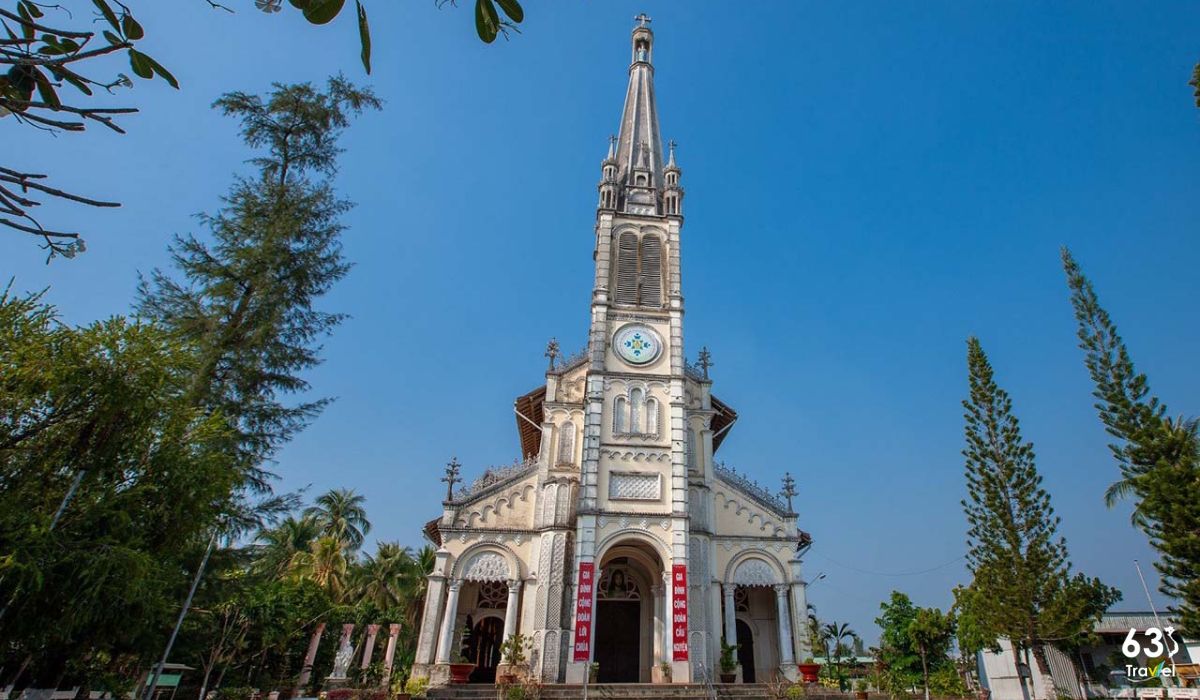
Cai Be Church in Tien Giang - Roman architecture at the confluence of rivers
Built in 1869, the church has gone through many changes but still stands tall next to the river. The church's architecture combines ancient Western beauty and Vietnamese tradition. With high domes, intricate carved details and many windows bringing natural light into the interior space.
The church has a cross shape when viewed from above, with a green campus and surrounding houses. The interior stands out with 5 marble altars, brilliant stained glass paintings, and paintings depicting the 14 stages of Jesus' journey. The church bell tower, with 4 bells cast from France in 1931, is a majestic symbol, creating a melodious echo every time the Holy Mass takes place.
>> Read more: Top 8+ famous tourist destinations in Tien Giang for you to freely "live virtual"
Go Thanh archaeological site
Go Thanh archaeological site was recognized as a national historical site in 2001, marking the heroic battle of the Southern army and people in the resistance war against the French. The battle took place on January 22, 1947, when Zone 8 soldiers and local militia responded to President Ho Chi Minh's call for nationwide resistance. At the relic site, archaeologists have discovered many precious artifacts, including more than 100 gold and bronze artifacts such as bracelets, rings, beads and ancient ceramic fragments.
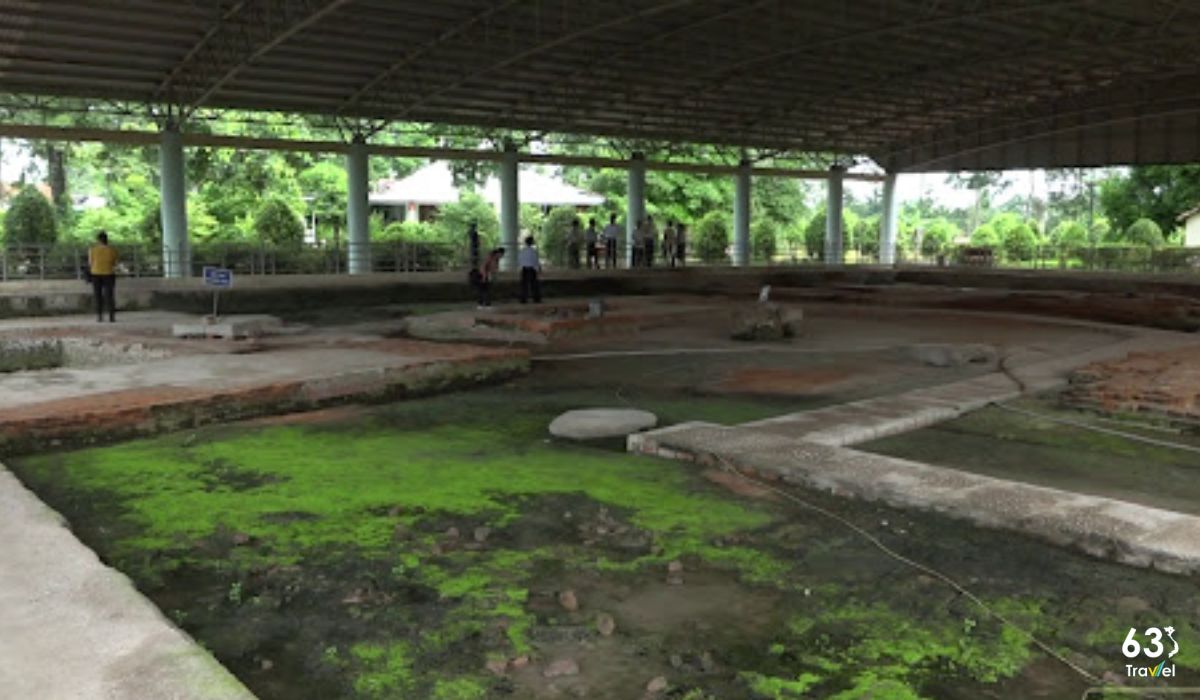
Go Thanh archaeological site in Tien Giang
This relic was first discovered in 1941 by French archaeologist L. Malleret. Located on a mound of land more than 1 hectare wide, the relic site contains many vestiges of Oc Eo culture from the 4th to 8th centuries, including ancient ceramic fragments, animal remains and the foundations of ancient temples and towers. The Ministry of Culture, Sports and Tourism recognized Go Thanh as a National Historical and Cultural Monument in 1994.
Dong Thanh Central Communal House
Dong Thanh communal house is located in Loi An hamlet, Dong Thanh commune, Go Cong Tay district, about 25km northeast of the center of Tien Giang province, and is an important historical site in the South. Established in the late 19th century, the communal house was originally built of simple bamboo leaves. By the early 20th century, thanks to the contributions of the people and landowners such as Huynh Chung and Huynh Dinh Khiem, the communal house was restored and completed in 1914 with a massive scale and unique architecture combining traditional styles. East - West.
Dong Thanh Communal House has a construction area of 787 m², including three main parts: Vo Ca Court, Main Hall, and Guest House. The architecture of the communal house follows the Tam style, featuring exquisitely carved patterns and ceramic decorations, expressing wealth and good feng shui.
This monument has gone through many events but still retains its ancient beauty. The communal house was recognized as a National Monument in 2008 and was funded by the Ministry of Culture, Sports and Tourism for restoration in 2010. Every year, the Ky Yen festival is held on March 16 and March 16. November of the lunar calendar, attracting a large number of tourists and local communities.
Governor's Palace of Hai Palace
Doc Phu Hai's House is an outstanding national monument of Tien Giang, standing out with its characteristic yellow tone. This ancient house is not only an attractive destination but also a testament to the delicate combination of Eastern and Western architecture. With its unique and harmonious architecture, Doc Phu Hai House attracts tourists to Go Cong land, which preserves precious cultural and historical values.
Built in the late 19th - early 20th century, during a period of great upheaval for the nation. The house is structured into three main parts: a main house of 533.26m², two square houses of 196.4m² and a rice granary. The main construction materials are wood, bricks, cement and tiles, demonstrating the elegance and steadfastness of a noble landowner family.
The highlight of Doc Phu Hai House is the intact preservation of the architecture, antiques and exquisitely carved works of art, reflecting the royal lifestyle of the ancient Doc Phu family. This is one of the typical feudal houses of the Mekong Delta, giving visitors an insight into the history and culture of this land.
Royal Mausoleum
The Royal Tomb Relics Area, located at Giong Son Quy, also known as Go Rua, was built in the early 19th century, as the resting place of Duc Duc Pham Dang Hung, grandfather of King Tu Duc. On December 2, 1992, this mausoleum was recognized by the Ministry of Culture and Information (now the Ministry of Culture, Sports and Tourism) as a National Monument.
The Royal Tomb not only stands out for its historical value but also for its exquisite architecture, a perfect combination of tradition and unique carving art. This work is built on a high mound, with a design that includes the mausoleum and church of the Pham Dang family. Parts of the mausoleum are made of precious wood, connected by sophisticated chiseling techniques, without using nails, proving the talent of ancient artisans.
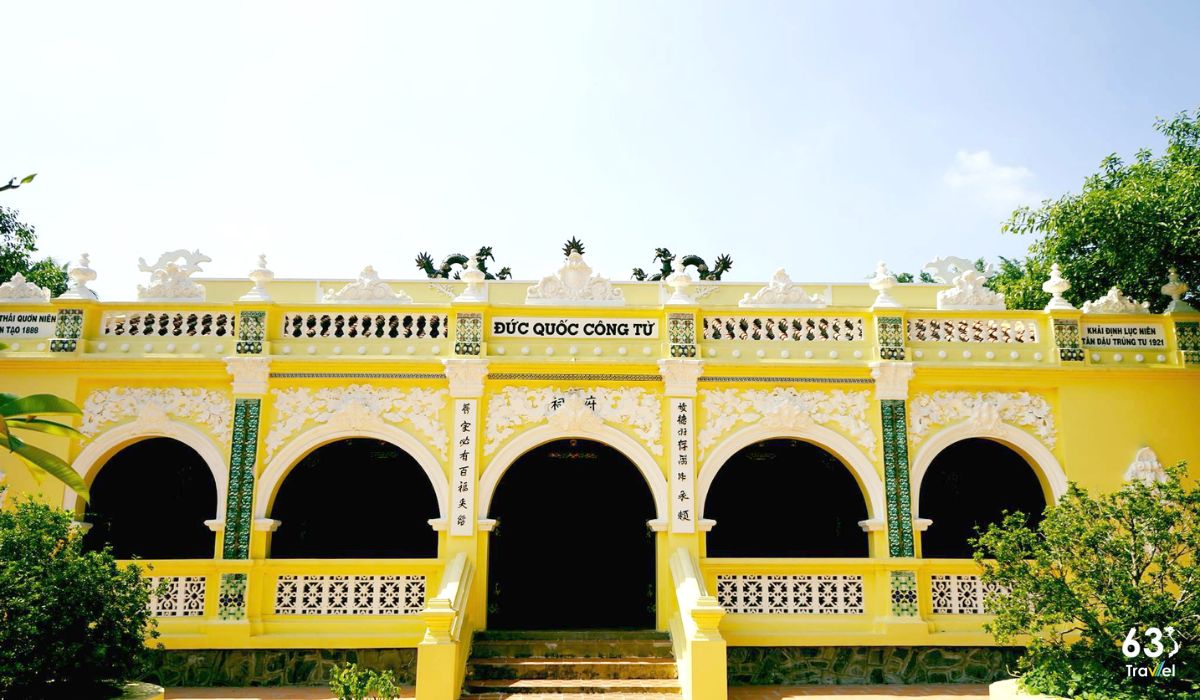
Royal Tomb relic in Go Cong, Tien Giang province
Pham Dang family church, located about 30 meters from the tomb, was built in 1888 under the reign of King Thanh Thai and restored in 1921 under the reign of King Khai Dinh. The church has five compartments, worshiping members of the Pham Dang family from the Duke Pham Dang Hung to his ancestors, creating a solemn space rich in cultural identity.
The tomb of Duke Pham Dang Hung is designed in the form of an octagonal cylindrical top, with a semicircular screen carved with images of dragons and unicorns, heavily influenced by Asian feng shui. The grounds around the mausoleum are covered with giant porcelain trees and fragrant flowers, creating a peaceful and intimate space.
Truong Dinh Temple
Truong Dinh's mausoleum and temple relic, located in Go Cong town, is an important historical site, honoring national hero Truong Dinh during the resistance war against the French in the mid-nineteenth century. His tomb was built shortly after his death in 1864, on a high mound in a pristine and sparsely populated environment. Over time, this area has been renovated and developed, becoming a destination that attracts many tourists.
Truong Dinh's tomb has a typical design of Southern architecture, using compound umbrellas and elephant-shaped costumes, surrounded by a 70cm high wall with large pillars carved with lotus flowers. Although not as magnificent as other monuments, the mausoleum still shows the people's respect for the hero.
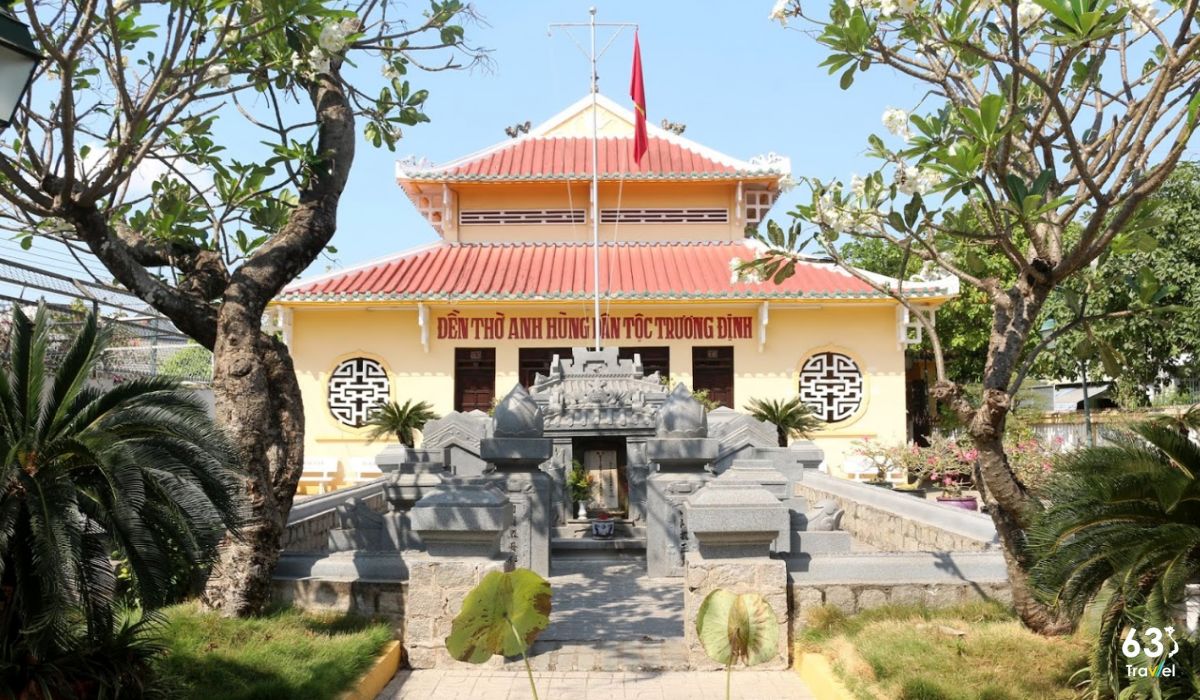
Truong Dinh Tomb and Temple Relics in Go Cong
The temple, built in 1972, has a traditional, solemn and ancient East Asian architectural style. Inside, there is a wooden book on Truong Dinh's biography on display, a Vietnamese record in terms of historical value and manufacturing technique.
In addition to the main relic, another temple was built in Gia Thuan, Go Cong Dong, where the insurgents used to be a base against the French. On August 30, 1987, the Truong Dinh tomb and temple relics were recognized as National Monuments, and the temple in Gia Thuan was also recognized in 2004.
Dong Hoa Hiep ancient village
Dong Hoa Hiep ancient village in Tien Giang stands out with the interference between Eastern and Western architecture, combining the sophistication of the period with the liberal atmosphere of the Southern rivers. Along with Duong Lam ancient village (Hanoi) and Phuoc Tich ancient village (Hue), Dong Hoa Hiep is one of the three most famous ancient villages in Vietnam.
The village currently has 36 ancient houses, of which 7 are recognized as heritage sites. The ancient houses here have bold Southern garden architecture, built according to the principle of "first near town - second near river - third near highway" to suit the culture and economy of the river.
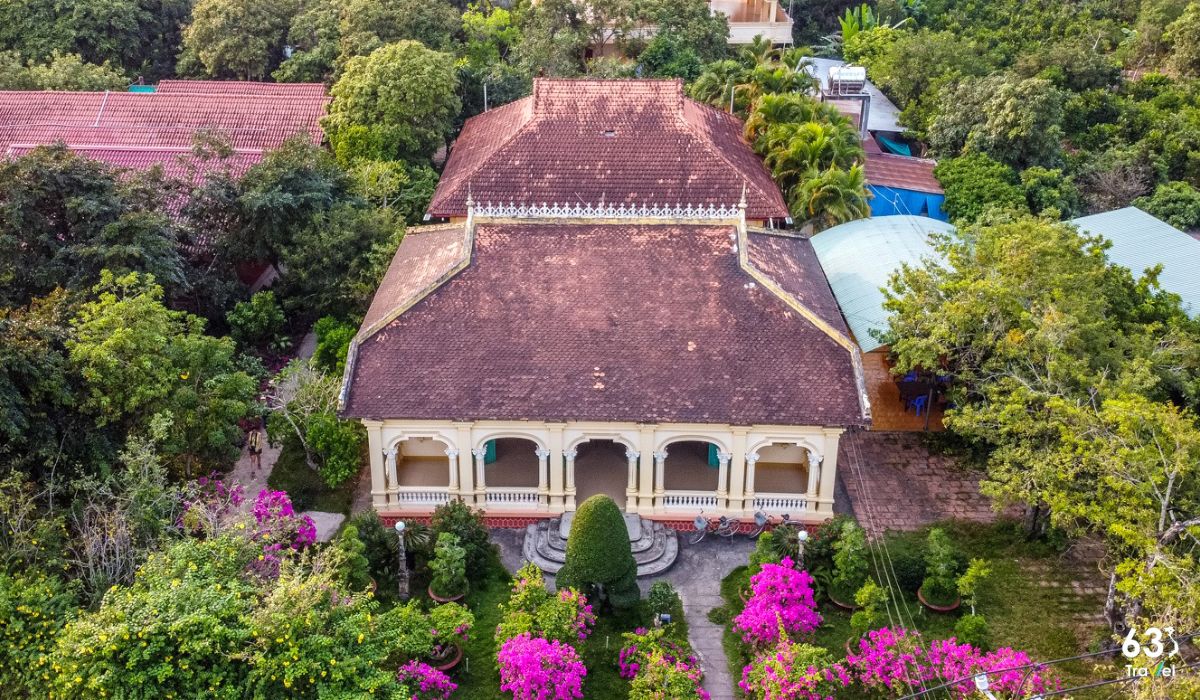
Dong Hoa Hiep Ancient Village - The attraction of a "hundred-year-old" ancient village
The highlight of the village is the house of Mr. Tran Tuan Kiet's family with an area of more than 1,000 m², with Northern influences and a separate resting area for guests. The ancient house of Mr. Le Van Xoat, with a lifespan of more than 200 years, still retains its majestic beauty and ancient interior, and also has a homestay area for tourists.
In addition to visiting ancient houses, visitors can experience green rice making at Ngoc Loi furnace and enjoy Western specialties such as banh xeo and fish sauce hotpot. Dong Hoa Hiep ancient village, with its green streets and ancient houses, gives visitors a feeling of hospitality and sincerity of local people. This is a destination not to be missed when coming to Tien Giang.
>> See more: What to buy as a gift when traveling to Ben Tre
Truong Dinh's Fortress
In 1987, the Truong Dinh Fortress in Tien Giang was recognized as a national historical site. Built in the past to play an important role in protecting the seaport of the Mekong Delta, the ramparts demonstrate the profound strategic vision of our ancestors in protecting their homeland.
The Fort's ramparts are hexagonal in shape, surrounded by a raised earth rampart with 6 symmetrical sides. On the edge of the land is tamarind and there is a large tree and a well in the center. To the Southeast, there is Tho Son mound, 21m high and 15-20m wide, used as an observatory.
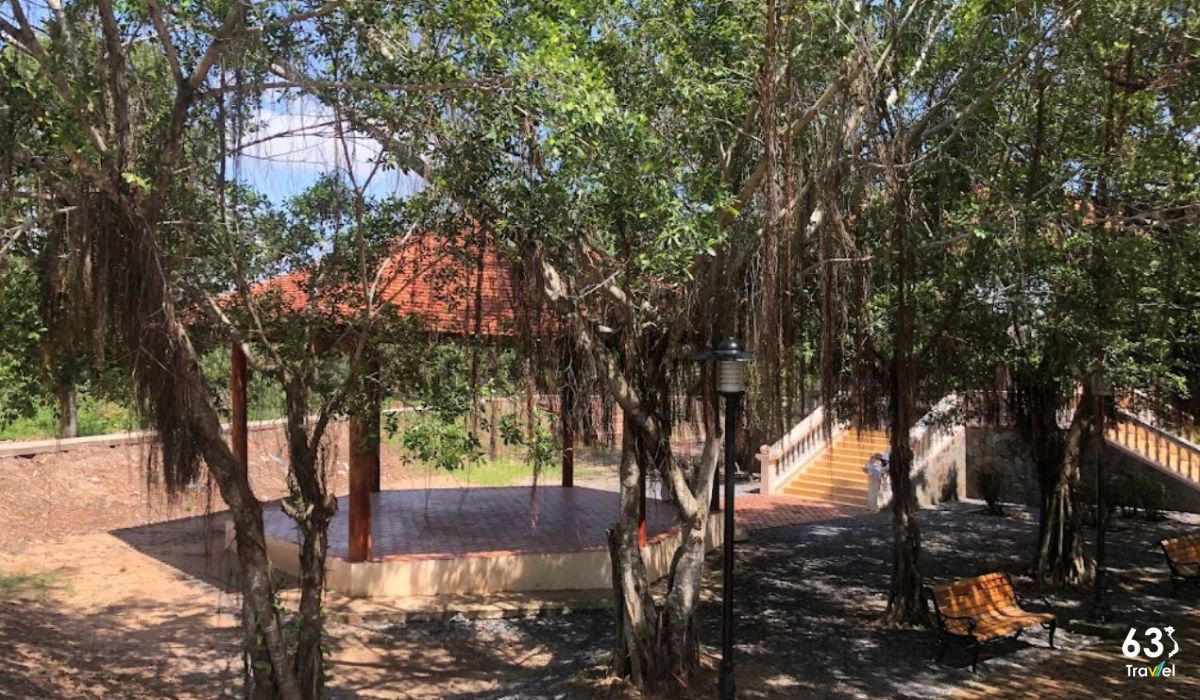
Truong Dinh's Fortress is ranked as a national relic
Around the ramparts is a system of embankment forests, mangroves, nipa palms, and cork, and on the river bed is a welded stone dam built by Truong Dinh to block enemy ships and serve as target for cannons. Da Han Dam, even though it has been around for a long time, is still marked to make it easier for ships to pass through.
In 2000, the Department of Culture, Sports and Tourism built the Fort Monument stele house with beautiful and solemn architecture, 9.4m high, 8.4m wide, tiled roof and concrete columns, high corrugated iron foundation. 2m above ground level. The stele house also restored two cannons, contributing to preserving the historical value of the Fort's barricades.
Rach Gam - Xoai Mut historical victory relic
Rach Gam - Xoai Mut Victory Relic Area is located in Kim Son commune, Chau Thanh district, Tien Giang, about 12km from My Tho city, on the bank of Tien River. With an area of more than 2 hectares, the relic site is an attractive destination for tourists who love history and culture.
Includes 3 areas:
Gallery No. 1: Covers an area of about 135 square meters, displaying ceramic paintings and artifacts from the battle, including weapons of the Tay Son army and Siamese army found on the riverbed.
Gallery No. 2: About 132 square meters wide, containing a collection of 546 artifacts, including weapons and vehicles of both sides in the battle.
Southern ancient house: Has an area of 225 square meters, divided into 3 rooms, 2 wings, with 48 wooden columns and yin-yang tiled roof. The house recreates the life of ancient Southern people and has been restored intact from Go Cong district.
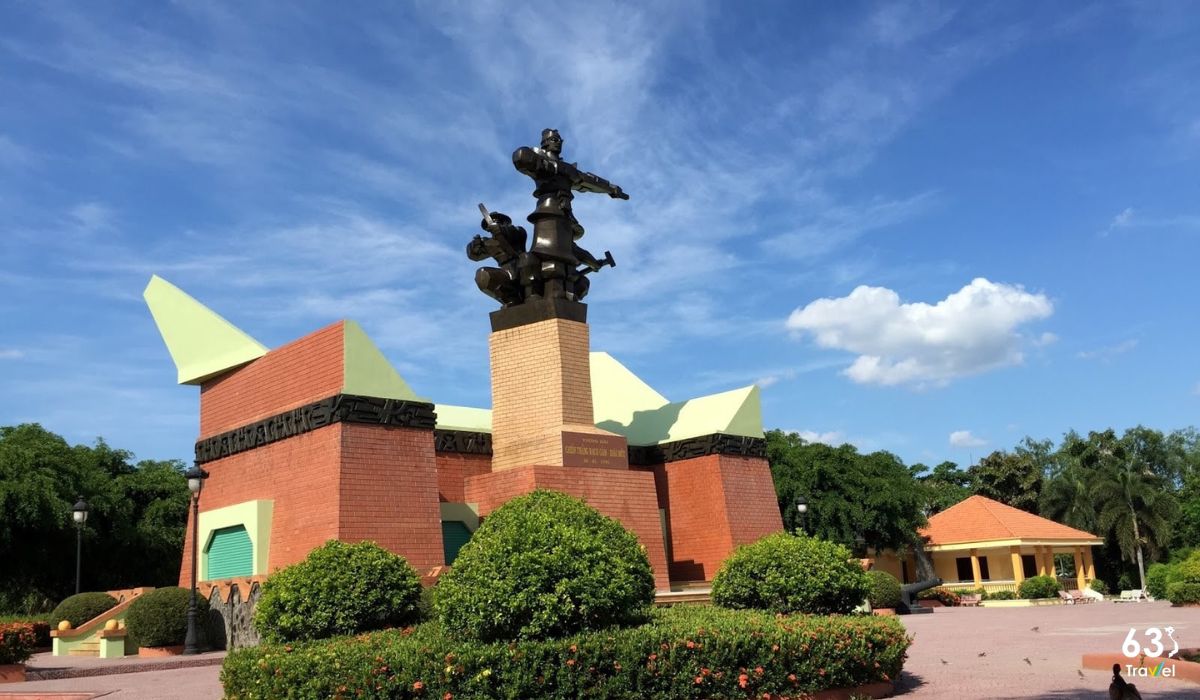
Rach Gam - Xoai Mut victory relic area
At the center of the relic site, the bronze monument of hero Nguyen Hue is 8 meters high, weighs 20 tons, placed on a pedestal simulating the shape of a warship, expressing the heroic image of the hero. Next to the statue is a soldier with a bow and a villager rowing a boat, creating a perfect scene.
The Rach Gam - Xoai Mut Victory Monument was not only ranked as a national monument by the Ministry of Culture and Information on December 2, 1992 but also recognized as a special national monument. This is one of the top 10 famous relics in Tien Giang, with majestic monuments and rich historical artifacts, contributing to enriching visitors' journey of discovering history and culture.
Thus, everyone has learned about 14 historical sites in Tien Giang that are famous for attracting tourists to visit. Quickly save this list to have an exciting experience here!
Tien Giang
13563 view
Update day
: 08/09/2024
63Stravel
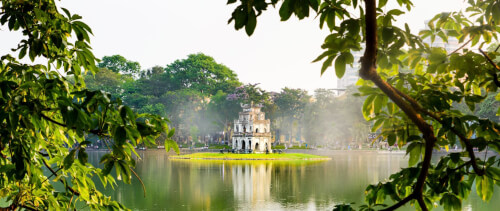 Hanoi (7)
Hanoi (7)
 Lao Cai (1)
Lao Cai (1)
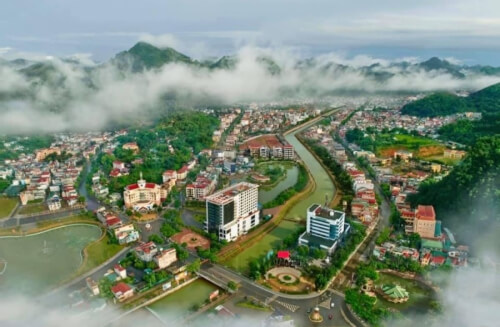 Son La (2)
Son La (2)
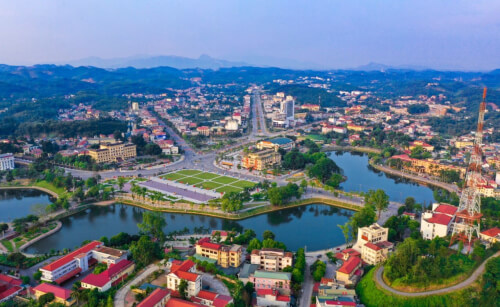 Yen Bai (1)
Yen Bai (1)
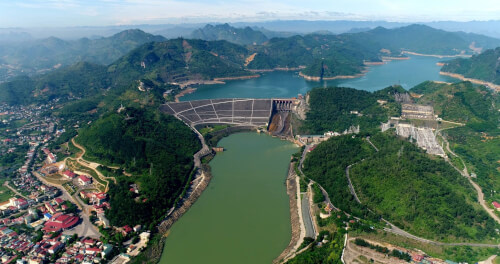 Hoa Binh (1)
Hoa Binh (1)
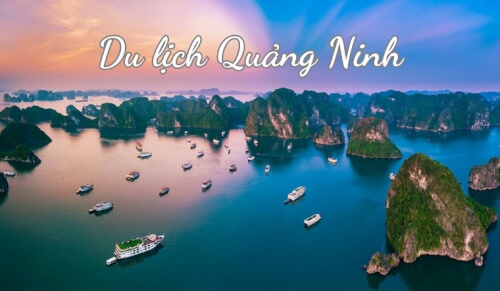 Quang Ninh (18)
Quang Ninh (18)
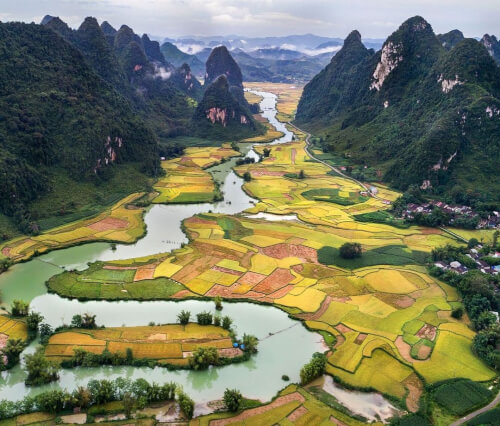 Ninh Binh (1)
Ninh Binh (1)
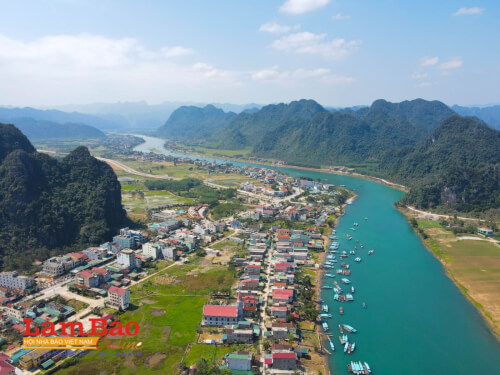 Quang Binh (2)
Quang Binh (2)
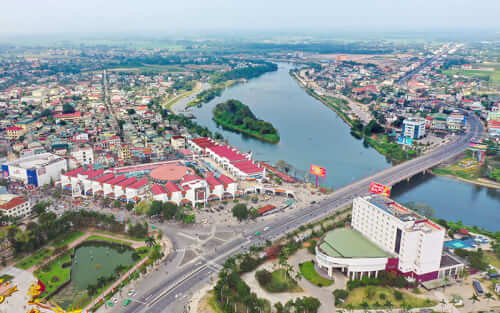 Quang Tri (1)
Quang Tri (1)
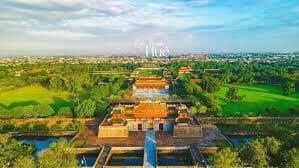 Hue (17)
Hue (17)
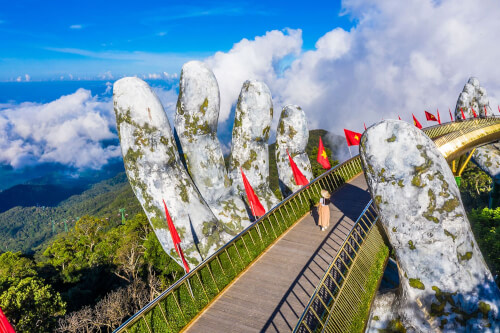 Da Nang (24)
Da Nang (24)
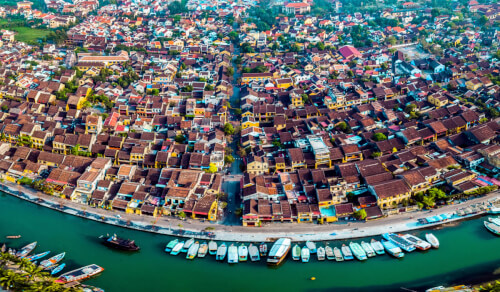 Quang Nam (16)
Quang Nam (16)
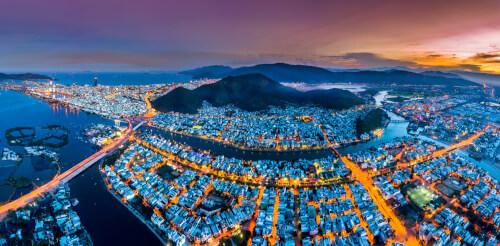 Binh Dinh (1)
Binh Dinh (1)
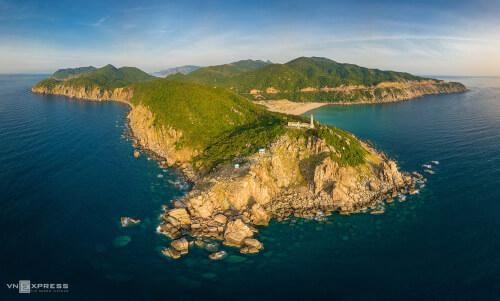 Phu Yen (1)
Phu Yen (1)
 Khanh Hoa (12)
Khanh Hoa (12)
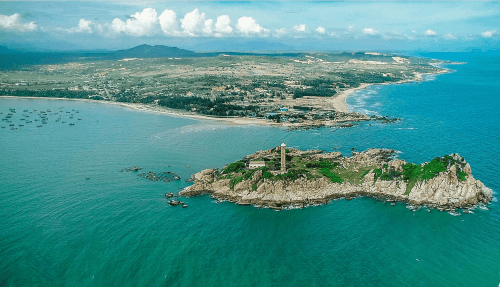 Binh Thuan (1)
Binh Thuan (1)
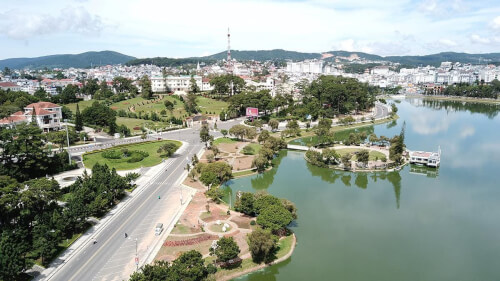 Lam Dong (7)
Lam Dong (7)
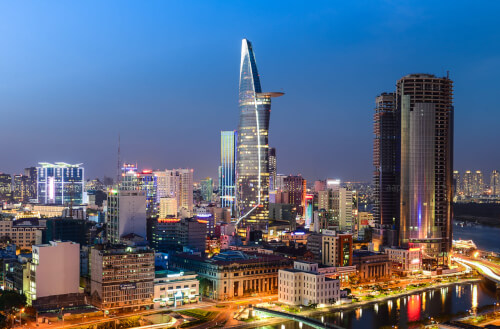 Ho Chi Minh City (3)
Ho Chi Minh City (3)
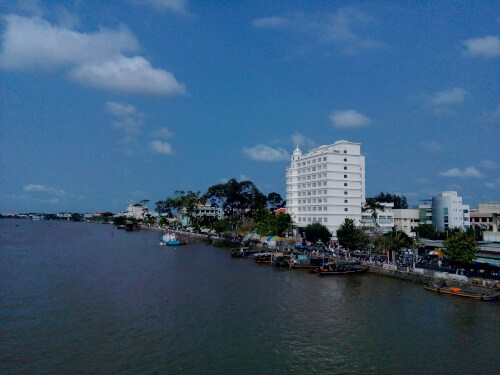 Ben tre (3)
Ben tre (3)
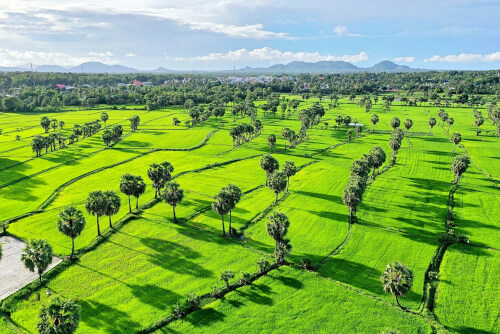 An Giang (1)
An Giang (1)
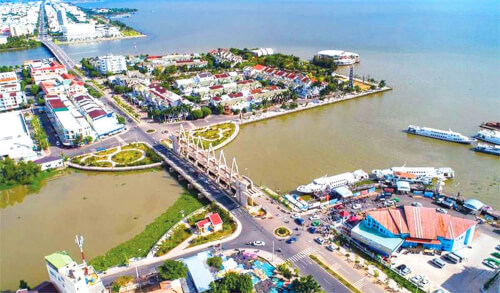 Kien Giang (4)
Kien Giang (4)
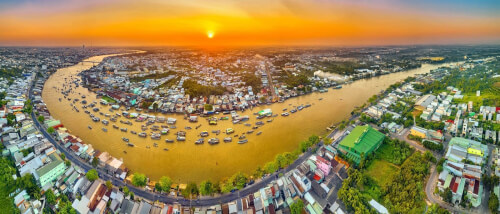 Can Tho (3)
Can Tho (3)
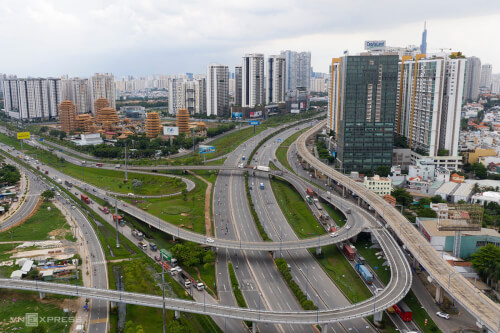 Foreign (3)
Foreign (3)

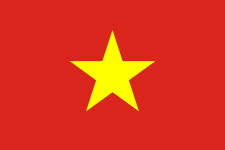 vn
vn en
en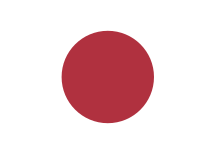 ja
ja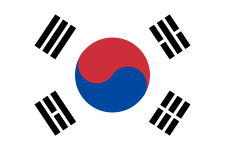 ko
ko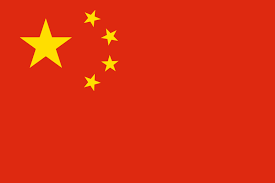 zh
zh


















